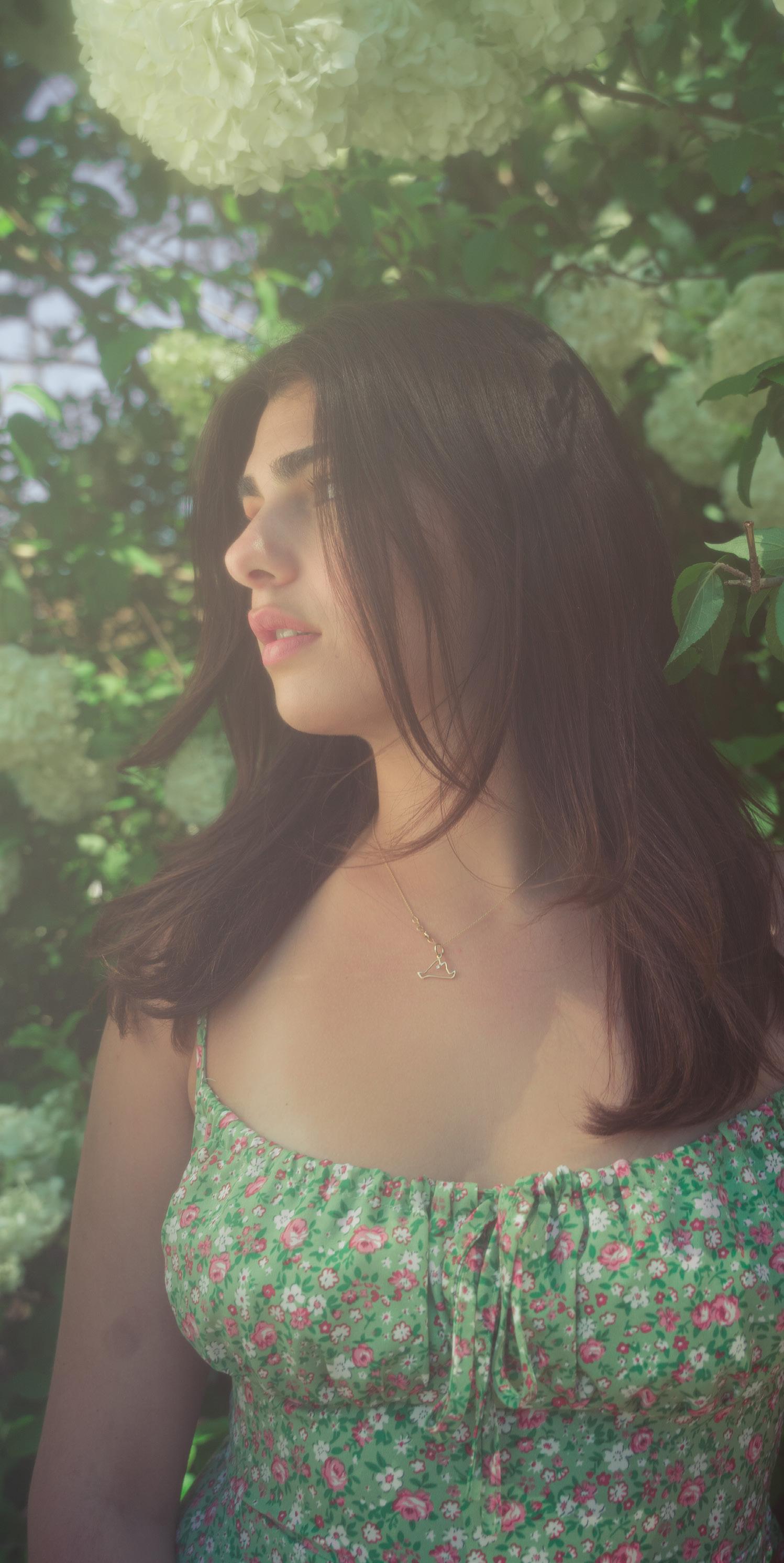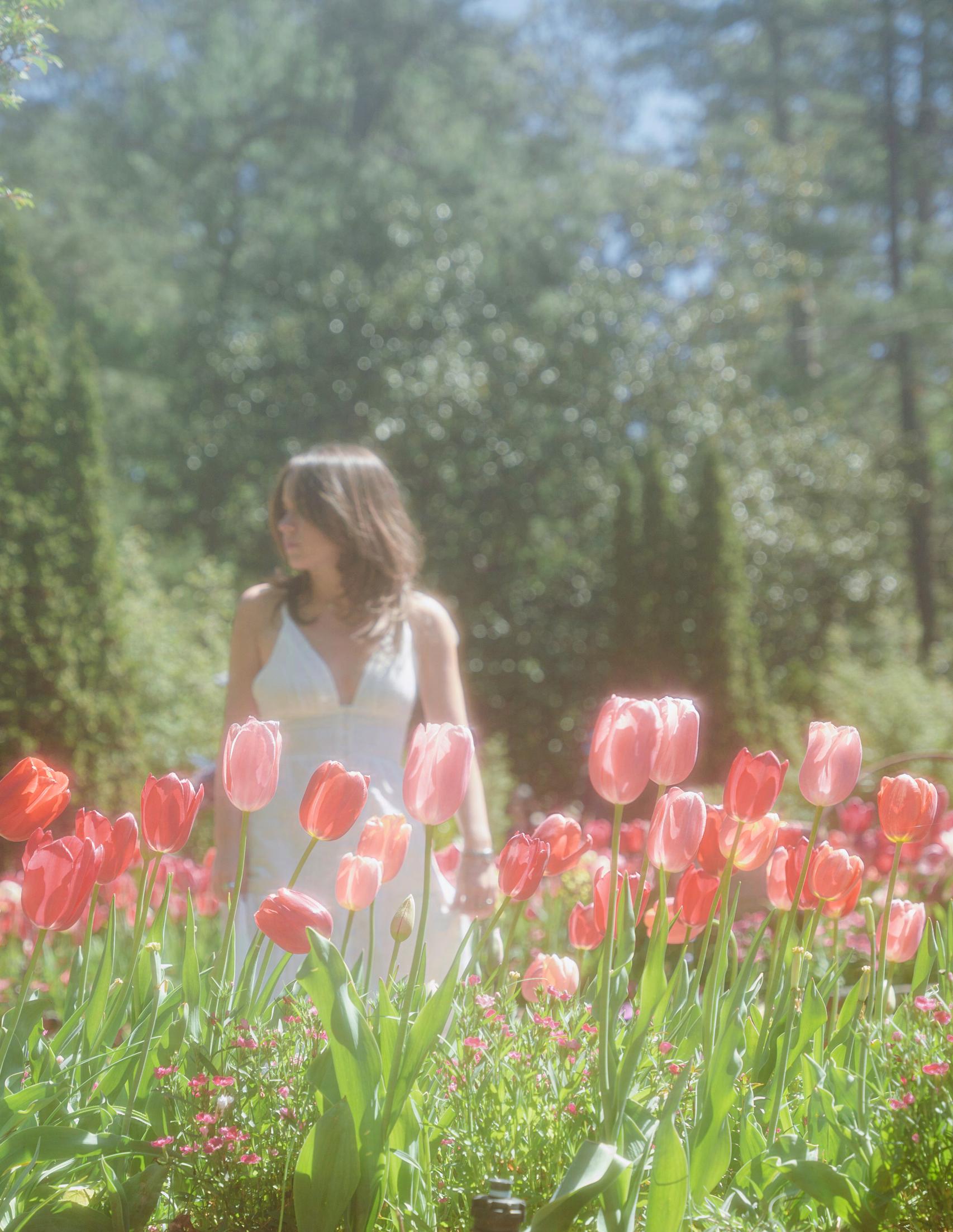THE EDGE



Would you believe us if we told you that we didn’t even have each other’s contact information before taking on the role of Editors-in-Chief, and now we have each other pinned on iMessage? Fast-forward to May, and not a day goes by where we don’t text each other.
When former Editor-in-Chief, Anna Cave, called us to offer the positions of co-editors, we both said yes to the challenge. We were in two time zones, halfway across the world and barely knew each other; we’ve come a long way in the last five months. It’s crazy to think back to the initial nerves we felt. Although it has been five months, it still doesn’t feel real. We are not the same Sarah and Catie who walked into our first interest meeting freshman year, or the same Sarah and Catie who were writing our first articles for the Lifestyle and Travel sections. We are not the same Sarah and Catie who took on the roles of editors for those same sections. The Edge has truly given us both an outlet for real, impactful growth in college and beyond.
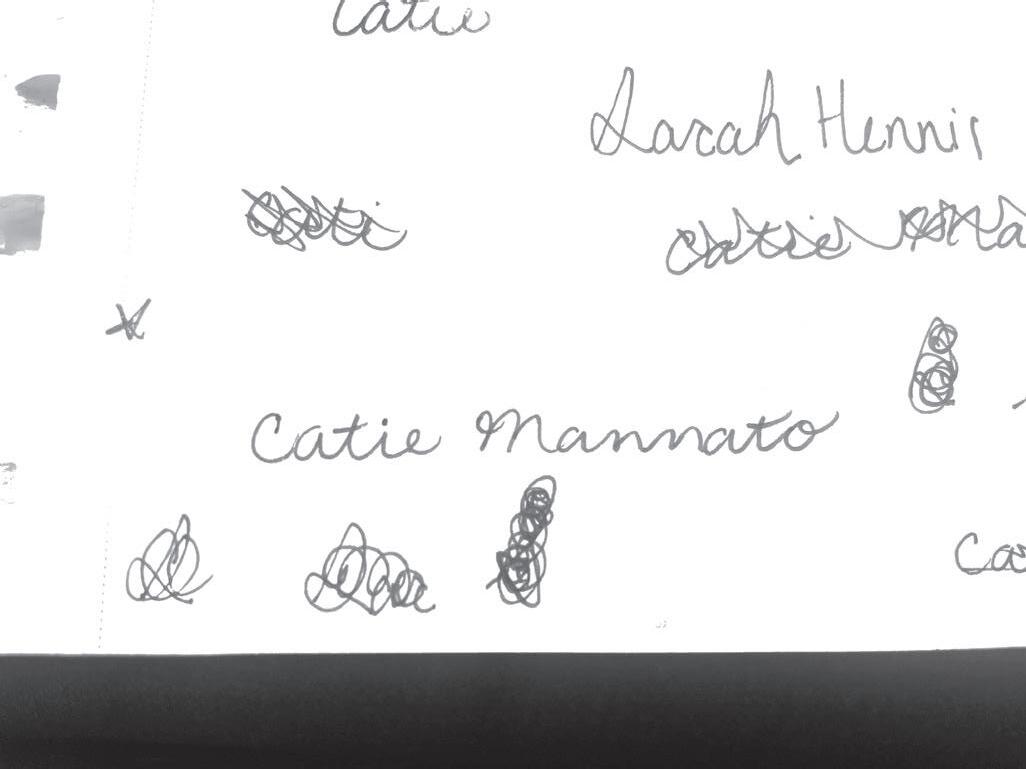
To our team: we don’t know how to begin saying thank you. It’s such a privilege to be able to collaborate with a brilliant group of individuals. We have seen how powerful The Edge is, but this semester has allowed us to see the power behind the scenes. Overseeing the different sections and witnessing the overlap that connects them is a beautiful thing. Stepping into this position was nerve-wracking, but having such a strong foundation made it easier. We are grateful for a team that has been open to growing with us, never failing to impress us with their endless creativity.
Thinking about the idea of blooming, we obviously picture colorful flowers and gardens. This is depicted in articles like, “Oh, Take Me to the Gardens” (58), which takes you to explore florals around the world, and “The Secret Language of Flowers” (6), with its Victorian era twist. But to bloom, we also must find ways to revamp our lives. We break down manifestation in “Lucky Girl Syndrome” (10) and examine the perception of ourselves in “Me vs. Me” (26). Another aspect of this edition is the observation of beauty
standards, as seen in “Who Do You Wear Makeup For?” (30) and “The Evolution of the 'Ideal' Woman” (22).
To also bloom, we must question our habits — are they benefiting our physical, mental and emotional well-being?
Articles like “Sobriety in Society” (54) delve into our alcohol consumption habits, and “Let Loose” tells the story of women in society ditching bras. For society as a whole to bloom, we must look at issues at large like sustainability, incarceration rates and mindfulness of LGBTQ+ contributions to society.
“Rework Your Wardrobe” (48) poses ideas on restructuring our old clothing, avoiding waste culture. “The Era of Climate Anxiety” (44) calls upon our generation’s awareness of the Earth's warming. “People Can’t Flourish in a Prison Cell” (36) discusses the alarming rates of incarceration in the U.S. “A Look Inside Queer Fashion” (16) touches on the connection between fashion and LGBTQ+ culture, focusing on the immense impact this community has had on the world of fashion.
This issue, and everything we’ve accomplished this semester, would not have been possible without the teamwork of our creative leadership — our Creative Directors Cameron Leslie and Emma Mitchell. There’s no one else we’d rather spend our Sunday evenings with, rotating between our homes and swapping our favorite candy with as we map out The Edge’s week ahead. We can not thank you both enough for your consistent dedication and open-mindedness.
While this semester was challenging, it was also so rewarding for us. We are grateful to have led the team this spring and cannot wait to do it again this fall. With that, we give you In Bloom on balance and finding our equilibrium in order to bloom!
Sarah Hennis and Catie Mannato, Editors-in-Chief



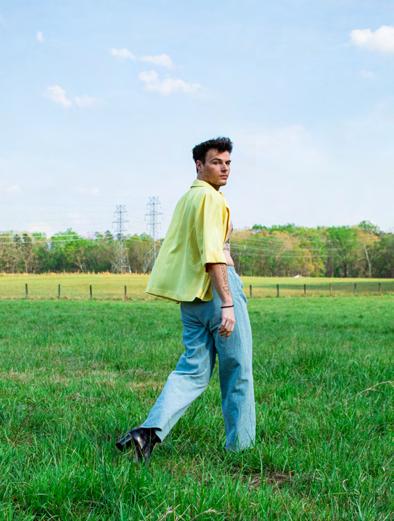
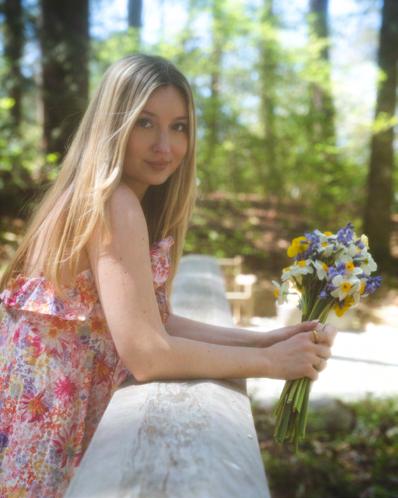

Editors-in-Chief
Sarah Hennis and Catie Mannato
Creative Directors
Cameron Leslie and Emma Mitchell
Copy Chief Emily Murrill
Assistant Madison Mursch
Stylist Kate Salvatierra
Fashion Editor Hope Suire
Assistant Editor Hannah Parker
Writer Shayla Smith
Writer Caitlyn Bishop
Writer Ava Girardi
Writer Elizabeth Reucassel
Writer Abigail Hayes
Beauty & Wellness
Editor Anna Grenier
Assistant Editor Kennedy Smith
Writer Amanda Cantale
Writer Ella Kucera
Writer Riley Otis
Writer Avery Paulen
Writer Alexa Merheb
Lifestyle
Editor Alexandra Elliott
Assistant Editor Leslie Aviles Mendoza
Writer Margo David
Writer Olivia Roederer
Writer Alexandra Borda
Writer Taylor Scott
Writer Samantha Resnick
Travel
Editor Maggie Smith
Assistant Editor Delaney Moore
Writer Kaitlyn Vigeant
Writer Madi Rotermund
Writer Kailey Casl
Writer Camille Olmstead
Writer Emily Cohn
Features
Editor Amy Ellison
Assistant Editor Caroline Pirwitz
Writer Oona Timmeney-Tracy
Writer Taylor Barbadora
Writer Alexandra Schneider
Writer Mollie Lund
Videography
Director of Videography Kate Spencer
Assistant Video Editor Jules Hallman
Social Media Director Julia Lissy
Executive Assistant Jenna Manderioli
Assistant Sam Sutherland
Assistant Millie Whitmore
Assistant Isabelle Pipher
Graphic Designer Ella Bloomingdale
Graphic Designer Sophie Lane
Digital Media
Analytics Director Robert White
Analytics Director Sarah Gombos
Analytics Assistant Nicole Andrade
Analytics Assistant Sydney Sabesan
Designers
Designer Hadley Kaeyer
Designer Camille Duplechain
Designer Cinda Birch
Designer Peter DeSantis
Designer Shaina Heitzner
Designer Serafina Paratore
Designer Emma Geismar
Photographers
Photographer Brendan Antrosiglio
Photographer Ana Luisa Scholtes
Photographer Reese Garrity
Photographer Reid Dahill
Photographer Selma Maric
Finance
Finance Director Sophia Kotelly
Finance Director Christina Alescio
Kennedy: Getting outside after a long day. Whether I am reading, doing homework, going on a walk, or spending time with friends, getting outside has helped me to relieve stress and just enjoy the nice weather!
Anna: Picking tulips.
Delaney: Sunset drives with the windows down.
Christina: Pink Carnation flowers because it is my birth flower. At its root, they resemble messages that cannot be spoken aloud. I've always loved the meaning of carnations and buy them whenever I find them!
Alexandra: My favorite flower is a sunflower because yellow is my favorite color, and it reminds me of happiness!
Cameron: Orchids because they remind me of my mom.
Kate: Baby’s breath because they’re simple and go with everything, especially in a bouquet. They were the first flowers I ever bought myself. I always find that they stand out the most amongst more colorful flowers, despite their simplicity.
What is your lucky number?
Julia: 16! That’s my birthday and I share it with my twin so it’s super special.
Kate: 7! I see it everywhere and it represents intuition and mysticism.
Christina: 13! I even have it tattooed on my wrist. Contrary to the perceived bad luck of the number, it has always been my lucky number. It never brings harm, just good luck!
Alexandra: My lucky number is 5 because I see it everywhere! The angel number 555 means positive change is coming, so it makes me feel at peace knowing there are good things in store.
What is your refreshing drink of choice on a spring day?
Amy: An iced tea lemonade from Starbucks.
Emma: A tropical fruit blend smoothie.
Leslie: Horchata!
Robert: My favorite would have to be a strawberry lemonade Polar Pop… with the good ice!
Emily: An iced chai!


Behind their captivating colors, delicate stature and gorgeous fragrances, there is more to learn when it comes to flowers. What may seem to our eyes as something so simple, flowers, in reality, hold a deeper meaning. Whether they capture a secret message, represent the Victorian era or are show-stoppers in weddings, these dainty aspects of nature have a much stronger presence than we think.

Floriography is the language of flowers, meaning that specific flower types have their own meanings which communicate certain feelings. The language is spoken by selecting specific flower types with associated meanings to communicate feelings or wishes. Let’s break down the meanings of each of these flowers from the Victorian era.
Love. a complex, passionate, hopeful feeling with numerous associations. Is there one true specific meaning to define love? The answer is no, but the symbolism of love is everywhere.
Love — a complex, passionate, hopeful feeling with numerous associations. Is there one true and specific meaning to define love? The answer is no, but the symbolism of love is everywhere. The red rose, a staple and immediate identifier of love, symbolizes the passion and romantic aspects of love. The daffodil, with its bright yellow and white colors, symbolizes the unrequited type of love — when the feeling is strong but not reciprocated. Lastly, there is the white rose. The Victorian era emphasized how the deeper the color of the rose, the deeper the passion. The white rose explains
unrequited type of love
passion & romantic aspects of love
a love that is innocent, compared to that of the red rose. The blissfulness that is an innocent love is something that falls into place naturally. This type of love is new and fun, and it can sometimes be associated with our first love.
Understanding the deep sorrow that is grief is a difficult pill to swallow, as it is such a complex emotion to feel. How might a flower, something we usually associate with blooming and warmth, represent grief? The poppy, a small red or white flower, symbolized the remembrance and ongoing memory aspect of grief in the Victorian era. Grief is powerful in that it emits harsh feelings such as cruelty and jealousy, which the marigold portrayed.
Secret proposals were common in the Victorian era, many of which were from unwanted suitors. The flower type and hue had to express a specific message and appropriate meaning. On one hand, the yellow carnation signified rejection, whereas the red carnation meant admiration and fascination. This mix in meanings could give the suitor the wrong impression, so it was incredibly important to be cautious. A yellow rose symbolized friendship — a classier exchange for what we now call the “friendzone.”
Floriography was also used in platonic relationships, specifically when offering good luck. Sending luck to those moving onto a new chapter or starting a new beginning could be done through flowers. Bouquets of heather and apple blossoms were a common way of wishing someone good fortune.
love that is innocent
remembrance & ongoing memory aspect of grief


Receiving flowers as a gift is a common dream for many. Whether they are five dollars from Trader Joe’s or a custom bouquet, buying someone flowers is always a special gift. Flowers have such a special meaning in general, as they are less of a materialistic gift and more of a moment to have for a bit of time. Watching them bloom from a vase is stunning to see, and they immediately brighten up a room.
Have you ever wondered why brides carry bouquets? Besides bouquets being a stunning addition to a bride’s look, tying everything together, bouquets hold much more meaning. Wedding bouquets are actually designed to complement a bride’s individual aesthetic. Since the ancient Romans, flowers have been a staple for brides and weddings. These flowers symbolized fertility, fidelity and new beginnings. Some herbs and spices — like dill, for example — were incorporated into bouquets in the Middle Ages to fight off unlucky, evil spirits. From the Victorian era to now, classic wedding bouquets have become an everlasting tradition. Queen Victoria held a small bouquet in her marriage to Prince Albert in 1840. Brides began to choose flowers that held meaning such as love, happiness, ambition and much more to customize the meaning of their relationship. Peonies, for example, represent happiness and ambition, as they are largely part of spring weddings. Along with these feelings, the bouquets and other floral arrangements still hold value in their colors, fragrances and even the overall color scheme of the wedding. Honestly, who wouldn’t want to pick out their favorite colors for their wedding anyways? Trust us; we know some of us have been planning our wedding on Pinterest since middle school, so we get it!
POV: it’s time to toss the bouquet. Wedding guests anxiously wait for this big moment, and many prepare to catch the bouquet as if it’s the game-winning, Hail Mary pass in the Super Bowl. But, why do we toss the bouquet? This tradition actually originated in medieval Europe, where wedding guests would rip pieces of the bride’s dress for good luck. In 2023, we know that a
bride would not want that. So, the bouquet toss replaced this, meaning that if a woman catches the bouquet, she will be next in line to get married. After indulging in a few drinks at the reception, we know those elbows might be coming out — or even a diving catch on the dance floor.
Okay, you’ve got your beautiful bouquet picked out, and a friend makes the big catch. Then what? Many brides want to find ways to save their bouquets (and who wouldn’t after finding the perfect one?). Pressing flowers is a unique technique in which brides can preserve their flowers. This is very simple, and all you need is some parchment paper and a couple of heavy books. Line a book with parchment paper, place the flowers on top, then add another sheet of paper and close the book. Add a few more to make sure the flowers are completely pressed. To display these flowers, you can place them in a photo frame, making them a beautiful accent to your home. This technique looks beautiful and helps commemorate such a meaningful day. Another way to preserve flowers is by using silica gel. Silica gel helps to keep the shape and color of flowers. Find a container from a local craft store and fill the bottom with the gel, place the flowers inside, then cover the rest with more gel.
Flowers are much more unique than what we see to the naked eye. Floriography helps us understand the meaning of each and every flower, which makes them a more meaningful or celebratory gift. So, maybe it’s time to revisit that wedding planner Pinterest board from middle school and find some flowers that encompass your personality and aesthetic.
Elle Woods is an icon. She scored a 179 on the LSAT after a breakup with her longtime boyfriend, then went on to graduate from Harvard Law School with honors. Through trials and tribulations, Elle thrived, as she continued to be her authentic self and remained optimistic through it all. Elle’s positive mindset carried her through challenges in law school, relationships and her career. Some might say that Elle Woods had a case of “Lucky Girl Syndrome.”
Lucky Girl Syndrome is a recent trend that gained popularity on TikTok. The #LuckyGirlSyndrome has over 650 million views, with countless videos of creators sharing their experiences with the mantra and how it changed their everyday lives. A song titled “Lucky Girl” by an artist named Carlina exemplifies the mindset of a Lucky Girl with lyrics stating, “I’m a lucky girl/ And all good things/ Come to me/ Flow to me/ Move through me/ Everything works out for me.” Creators use this song to showcase their self-improvement, which in some cases may be working out, receiving good grades, eating healthy or just enjoying the fruits of life’s labor.
Lucky Girl Syndrome gained traction at the beginning of 2023 when people shared their New Year’s resolutions. Resolutions often carry a negative connotation, as there is the shared belief that most people will not follow
through with their goals. However, Lucky Girl Syndrome combats the stagnancy that often follows resolutions. The premise behind Lucky Girl Syndrome is improving one’s life through the practice of optimism and positive self-enforcement. A Lucky Girl embodies a growth mindset that consistently seeks self-improvement.

TikTok also experienced a boost in self-improvement content during the pandemic. Spiritual practices such as manifestation and the law of attraction gained traction on the app as users continued finding ways to improve their lives during quarantine. As manifestation and the law of attraction are often intertwined with the definition of Lucky Girl Syndrome, it remains important to note that these practices hold origins that go way back before the digital age.
Manifestation is the act of turning aspirations into reality through different belief systems. The law of attraction is the notion that specific beliefs bring specific outcomes. Manifestation and the law of attraction have been practiced for thousands of years and can be traced back to different religions and philosophers. Methods used to follow these spiritual practices include yoga, meditation and affirmations. Most of

these Western practices of manifestation and the law of attraction are simply interpolations of Hindu culture, though the origins of these practices are not fully reflected in Western versions.
Although Lucky Girl Syndrome is a term that is not meant to be limiting, it is important to note that there are societal implications preventing the term from easily applying to everyone. Systemic inequalities and social injustices cannot be “manifested” away, the same way that disparities can’t be attracted based on the energy that one is putting out into the world. With that being said, Lucky Girl Syndrome is not a shield that blocks out all bad things. Life happens, and people adjust in the best ways they know how.
While positive thoughts are important, in order to fully embody being a Lucky Girl, one must put forth action. It’s not just thinking that you are lucky; it’s also important to commit to actions and form habits that
will align with your beliefs. Believing is simply the starting point, but action is what carries you to the destination.
The first way to become a Lucky Girl is to have a growth mindset. Having a growth mindset versus a fixed mindset promotes personal growth. A fixed mindset remains comfortable with complacency, believing that specific traits, habits or qualities are unchangeable. On the other hand, a growth mindset believes in improvement, and that challenges that arise are only for the betterment of personal growth. Remember, growth

is not linear progress. Some days you may find yourself more consistent than others, but it is important to give yourself grace!
Throughout your journey, remember to combat selfcomparison, as comparison is the thief of all joy. Lucky Girl Syndrome started from social media, which is often a huge proponent in the promotion of self-esteem issues and insecurities among young adults. While social media has a huge impact on how people view society, it is critical to be aware that not everything you see online is real. Out of the millions of videos under
#LuckyGirlSyndrome, think about how many of those creators edited out the days when they received job rejections or didn’t go to the gym or didn’t have clear skin. Most of the time, these videos show people at their best, rarely focusing on the challenges it takes to reach their goals. Simply put, comparison is silly, as most comparisons stem from a lack of knowledge of someone's true reality.
The next step to becoming a Lucky Girl is building good habits. James Eaton’s book “Atomic Habits” explains that habits should be “obvious, attractive, easy and satisfying.” Since being a Lucky Girl begins with having the right mindset, building habits around creating positive beliefs is a great way to start! Making this habit obvious could simply mean setting affirmations as reminders on your phone to carry positive thoughts throughout the day. Another way to make a habit obvious is to be intentional about placement and making it

"Show up as your authentic self. "
attractive. Create a vision board curated with pictures of who you want to become, and set it as your wallpaper on your computer or phone. Creating habits may sound strenuous, but developing habits becomes easier by meeting yourself where you are. If you are not in a place where you can practice affirmations, put together a playlist of your favorite songs that can be uplifting in down times. That way, if you are in a hard place, you are prepared with good energy that can keep you going. Finally, to make a habit satisfying is to simply find ways to enjoy what you are doing — whatever it takes to be the best version of yourself.
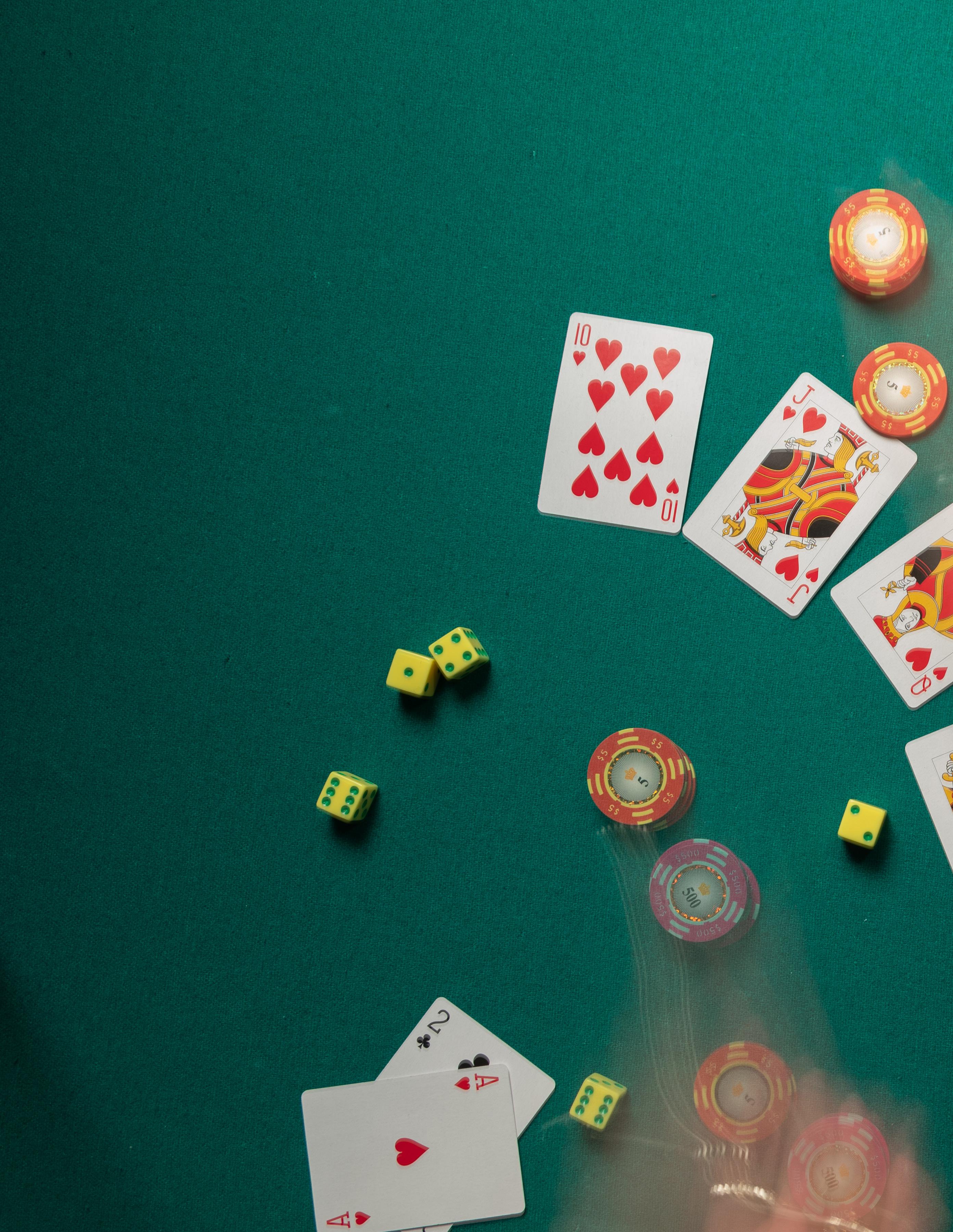
The most important step in becoming a Lucky Girl is to show up as your authentic self. Elle Woods’ journey to success was not easy. Her long-term boyfriend broke up with her because, in his own words, he “wanted someone more serious.” The idea that Elle was not serious simply stemmed from her personality and positive outlook on life. Oftentimes in society, women are trivialized and perceived as impractical for their optimism. Because of this, women tend to shrink themselves in order to accommodate the opinions of society. However, a person’s light should not be dimmed in order to make others feel comfortable.
The beauty of Lucky Girl Syndrome is that it allows women the freedom of self-exploration through healthy practices. Truthfully, anybody can adhere to the Lucky Girl lifestyle because it is simply a self-growth journey. Remember to be patient and rid yourself of wasted worry. Jim Carrey once said, “Flowers don’t worry about how they’re going to bloom. They just open up and turn toward the light, and that’s what makes them beautiful.” As a Lucky Girl, always remember to slow down and smell the roses, as your time to bloom will soon come.
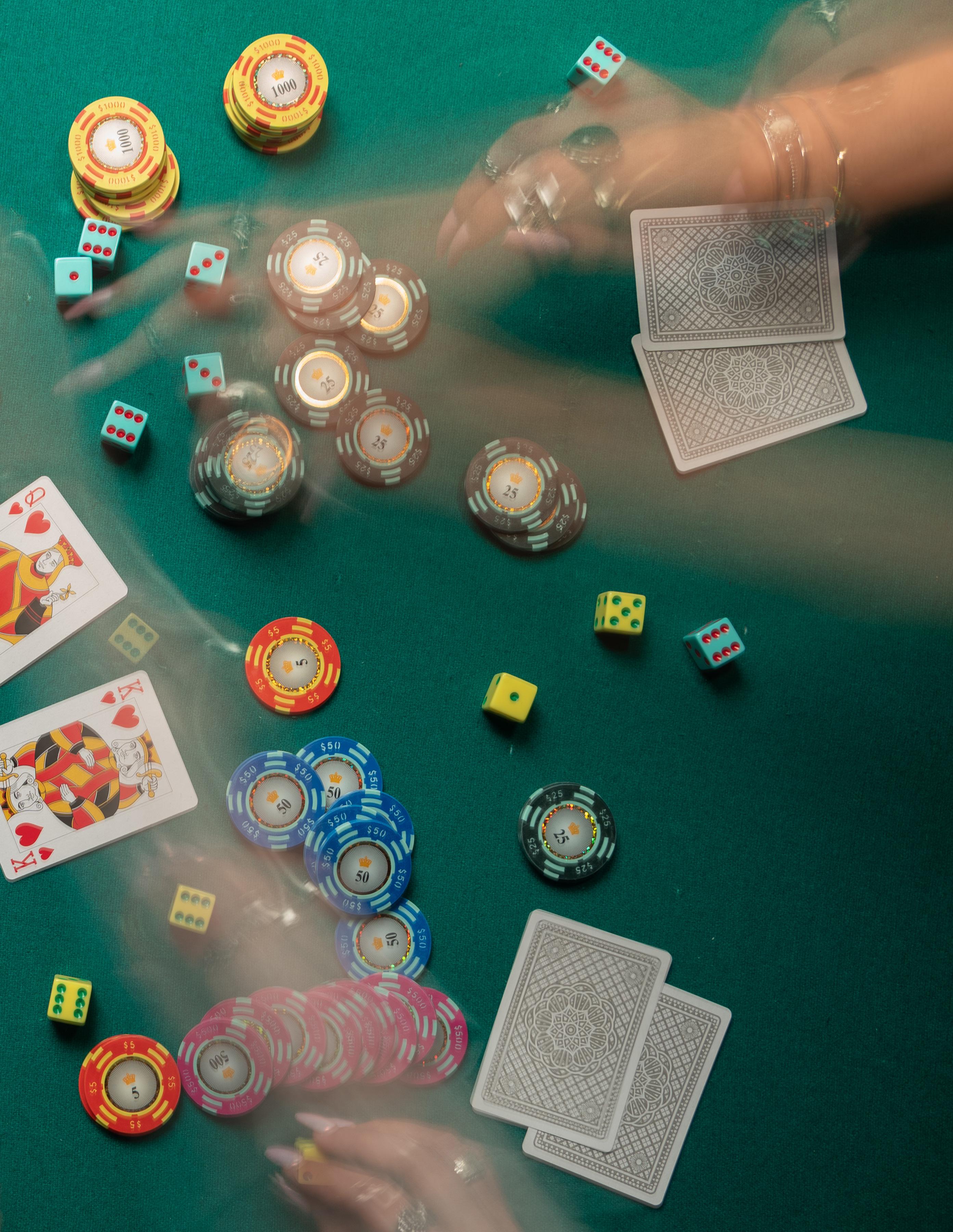

AVERY PAULEN
Fashion has always been used as a form of expression to communicate people’s identities to the world. Since the LGBTQ+ community has been historically marginalized in society, members would use certain fashion identifiers to indicate their sexuality to others. Using certain accessories and different styles of dress to communicate sexual identity has been an important part of queer fashion history. Let’s dive into some notable examples.
In the 1890s, Oscar Wilde wore a green carnation on his lapel to symbolize his queerness. Once it caught on, it became a trend for other queer men to wear this flower pinned to their clothing. In a time period where being gay was not socially acceptable, this powerful symbol was used to hint to others of the same identity while also identifying oneself. In the interwar years, particularly in New York City, the signal was a red tie. For a while, light blue socks were a symbol of homosexuality in England. In France, it was green cravats, a type of neck scarf. Fashion was being used to express sexuality all over the world, and it didn’t stop there.
Women started to dress more masculine throughout the 1920s. Many queer women began to wear trousers and blazers in public, which was a nod to being lesbian. In the 1970s, the antifashion movement was formed by lesbian feminists who attempted to dress against the male gaze. These women wore clothing items that intentionally did not fit societal norms, including bowties, suit jackets and baggier silhouettes. This powerful movement was one of the first times we have seen a fight against heteronormativity.
Queer men began using ear piercings to signal their sexuality in the 1980s. Although piercings were becoming more normalized, gay men saw a lone piercing in the right ear as a signal for queerness, allowing them to recognize one another without having to out themselves. “The illegality of homosexuality and the moral disapproval it attracted forced gay men and

lesbians to live virtually invisible lives in Britain, North America and much of the world,” writes Shaun Cole, an associate professor of Fashion at the Winchester School of Art and author of “Don We Now Our Gay Apparel.”
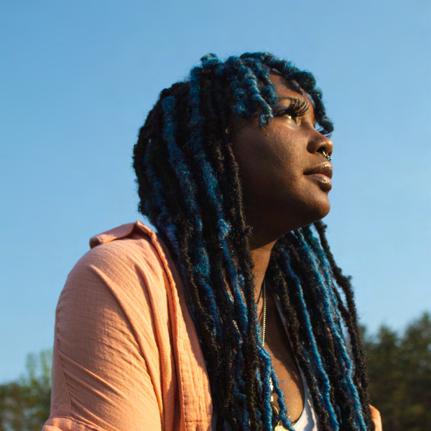

“Up until the gay liberation movement of the late 1960s, the most important criterion of public dress, for the mass of gay men and lesbians, was to be able to ‘pass’ as heterosexual. Despite this need, many were aware of the dress codes and items that could be used to signal sexual orientation.”

As queerness has become more and more accepted in today’s society, the LGBTQ+ community has several known aesthetics of what different members of the community wear. People are straying away from traditional gender roles, giving individuals more freedom to express themselves, and identifiers have become less secretive than in the past. Shortened manicures on women, dangling earrings on men and shag cuts and mullets are generally perceived as part of the queer aesthetic.
Over time, Doc Martens have become a staple in the closets of queer individuals. The clunky work boot was created for military men in the 1960s. The shoe was eventually adopted by older women and gained popularity in the ‘70s among activists, punks and the queer community. Women who were more likely to work in non-traditional, male dominated industries that required skilled labor wore Doc Martens, often paired with a flannel and jeans.
While it generally wasn’t accepted for a man to be a fashion designer, we can now see both queer men and straight men working in the fashion world. Some prominent examples include Christian Dior, a gay man who changed the high-fashion industry for the better. Despite the negative connotation surrounding straight men’s place in fashion, designers like Tommy Hilfiger, Paul Smith, Rick Owens and Oscar de la Renta are all male fashion designers breaking this outdated stigma.


"There is a fine line between appreciating queer culture and appropriating."
The idea of “straight copying” has also become a popular phrase used in the media. Anna Pulley, the author of “The Lesbian Sex Haiku Book (with Cats!),” says that when she moved from the Midwest to San Francisco, she didn’t know who to hit on anymore because the language of unspoken dress codes had changed. For example, flannels on women in San Francisco were considered part of “the urban lumberjack uniform,” which was the common middle-class uniform. “Midwestern queer culture is extremely different from Bay Area queer culture, and one of the things that stood out to me was the difference in fashion,” she says. “Flannel was one way to signify, like, I exist.” Now when she sees someone wearing a plaid flannel shirt, she wonders whether they are gay or straight. When the straight community remixes something that has been made popular within the LGBTQ+ community, its meaning essentially becomes lost.



This also applies to the fanny pack trend. What was once considered a fashion staple by the queer world is now being flaunted by celebrities like Kendall Jenner and A$AP Rocky. Some say the popularization of Coachella revived the fanny pack, while others think it is linked to rave culture. Much like the flannel and Doc Martens, fanny packs have been part of the queer wardrobe since lesbian second-wave feminists chose to avoid dressing fashionably in favor of comfortable, practical clothing. Though the fanny pack is now mainstream, it is severely overlooked as being a historical link to the queer community.
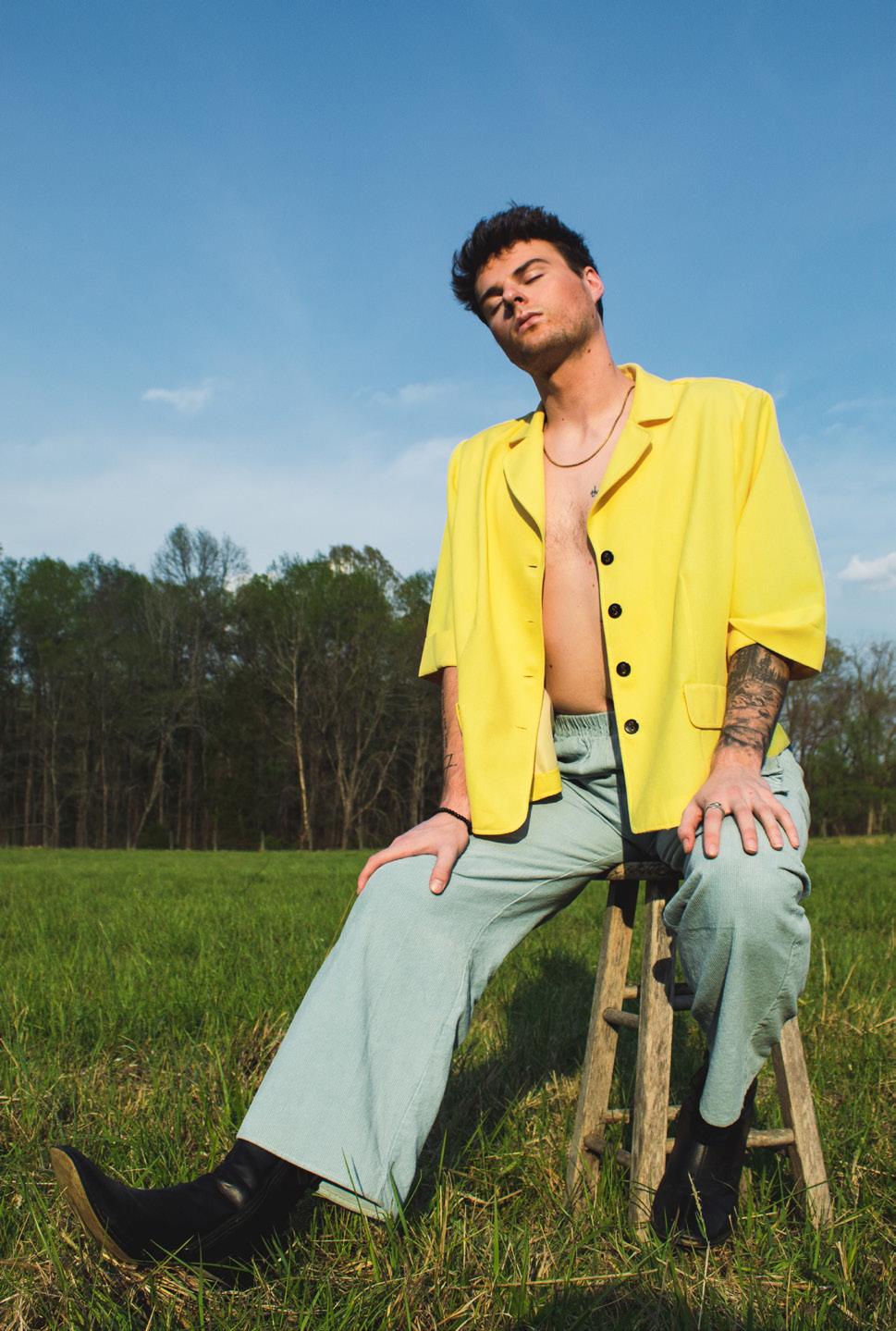
Though rainbows have been a symbol of the LGBTQ+ rights movement since the San Francisco Gay Pride Freedom Parade in 1978, it is important to remember there is a fine line between appreciating queer culture and appropriating. Unfortunately, the queer community is far from safe from rainbow capitalism. A member of the LGBTQ+ community wearing a flag to demonstrate expression is much different than someone attempting to commercialize on queerness. But on social media, the LGBTQ+ community is reluctant to embrace the rainbow merchandise, as they feel it's supporting the companies making the clothes instead of portraying “liberation.” Target and Walmart’s Pride merch, for example, were the laughing stock of TikTok for weeks.
Giulia Beaudoin, a student and lesbianidentifying female, used to dress in rainbow suspenders and a hat emblazoned with “PRIDE.” Now, she expresses herself by dressing in the “queer aesthetic,” trading Pride merch for flared jeans and loudly printed coats. She added that most of her straight classmates opt for more mainstream clothing choices like sweatshirts and leggings, but she never goes to school “in a basic outfit.”
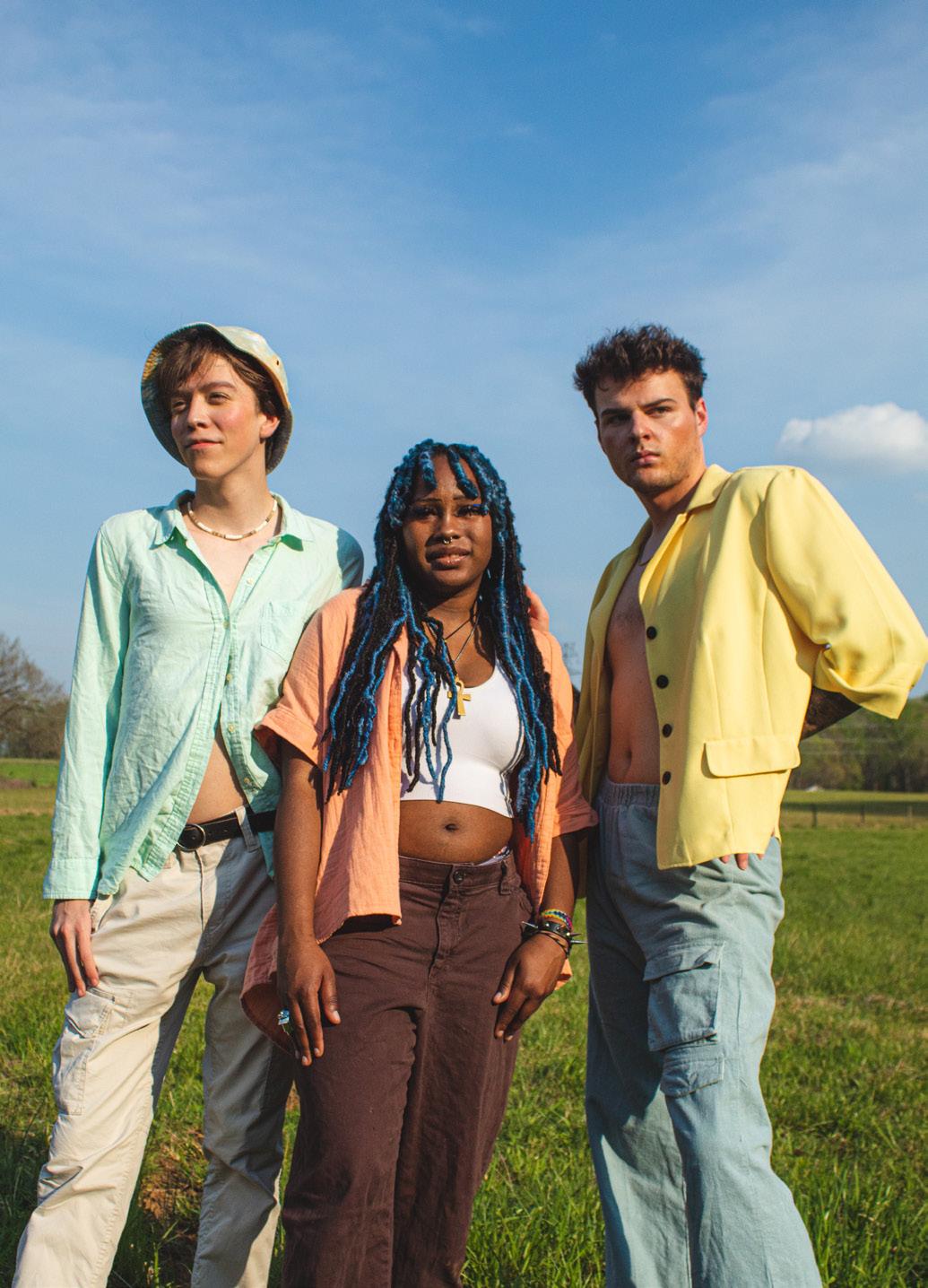

RuPaul, the host of the popular TV drag show series “RuPaul’s Drag Race,” has spoken out against the misappropriation of gay culture by heterosexuals. The show has led to the popularization of sayings such as “Sissy that walk!” Also, RuPaul has perfected the art of lip sync, but the new show “Lip Sync Battle” seems to poke fun at this, as it features hetero people moving their mouths to pop songs as if they were drag queens. The LGBTQ+ community often starts trends in food, design, music and other cultural arenas, but they ultimately get seized on, watered down and commercialized. Straight people must begin to take responsibility for compromising the queer community’s opportunities, freedom and lives for centuries. These individuals have had to hide in order to survive. Now, they are the backbone of modern culture. There is nothing wrong with wearing a suit when you’re a straight woman, or watching “RuPaul’s Drag Race” if you’re not a queen yourself, or attending Pride if you’re an ally. Just be knowledgeable and considerate of LGBTQ+ history and respect why the community wears, does and says the things they do.


The “ideal” face and body of a woman is often presented to us as we scroll through social media. Looking through social media, no matter the look or appearance of a woman, someone will always have something to say about it. The evolution of the ideal woman has changed over time with the help of many influences. Technology specifically has helped make this change, as access to the media is now instant. In many ways, beauty standards have changed through generations due to the ever-changing nature of our culture. Considering Gen Z, there have been current trends that have evolved, but many have also stayed the same. Specifically focusing on the ideal woman’s body type, it has evolved according to societal standards due to digital media.

How has the definition of beauty changed over the years? It is very important to remember that beauty standards are ever-changing. The ideal body type has changed drastically over the past century. Throughout history, there has been a point in time where just about every body type has been considered to be ideal. Especially in the 1950s, society decided the place, look and feel of a woman. Women were expected to have perfect hair, makeup and clothes –– especially if they were accompanying a man or at work. Working at the time was still uncommon for women, so looking professional was of the utmost importance. Matching outfits and accessories were all the rage, especially when it came to gloves, hats and skirts. Pearl jewelry symbolized a classy woman. Being elegant and put together was necessary in order to be taken seriously. The trend of flawless glass skin was very popular, as a blemish was not acceptable in society. Being “perfect” was the only way to fit the image of an ideal woman. Women needed a sophisticated look, or they would be passed over for the job. While the physical appearance of women was important, their inner beauty was overlooked. During this time, a woman was less about her brain and more about her body.
Growing up in the 1980s, women began to feel more powerful in deciding what beauty was to them. However, there were still many influences from society, such as the rise of television stars. Women were trying to balance feeling confident and bold on the inside while also presenting that outwardly. The comparison of women took off as the media started to recognize women for both inner and outer beauty as well as skill and intelligence. Television played a critical role in the media in the 1980s. Shows like “Charlie's Angels” contributed to the media's perception of women's beauty in television and the changing standards. “Charlie’s Angels” was hugely popular for both men and women. The show displayed the different types of beauty among women. One woman was the star of the show with a tight outfit and heavy makeup. Another woman was known to be “medium” pretty and averagely smart, and one woman was known to be smart with sharp skills. At the time, it

TV shows weren’t the only media that women viewed at the time. Many women also looked at celebrities and models for beauty advice, as they were on the front pages of magazines and newspapers. Brooke Shields, an American actress and model, was very influential –– especially in terms of her height. Shields was tall and took risks wearing different hairstyles and clothing, all while her stature made her seem powerful. Many people saw her for a different kind of beauty based on how tall she was compared to other models. It was refreshing to see a powerful woman stand alone and tower over men. Shields became a trend and an inspiration to many women as they quickly began to mimic her bold outfits and extravagant hair. The onset of voluminous, curly locks on both men and women became popular in the late ‘80s. The bigger the hair, the more glamorous you were considered. Hair wasn’t the only thing that was trending; bright and bold colors in fashion and beauty made a statement. High rise workout attire with many patterns and, of course, leg warmers were a huge trend. Neon colors were not only shown in clothing, but also in makeup. Blue eyeliner and mascara were a pop of color and spice to add to your normal makeup routine.
In the present day, beauty standards and the evolution of the ideal woman have been heavily influenced by social media. Instagram, TikTok, Snapchat, Twitter, Facebook and YouTube are all platforms used to showcase one’s beauty, but they are not always used for good. Comparison has always played a part in society, but with the use of social media, many young women have become reliant on social media to stay up to date and see how many likes they have gained on posts of themselves. Social media places a heavy emphasis on having the ideal look or body type, which makes us wonder: are we going backward or forward in time? In this generation, women are respected for their inner beauty as much as their outer beauty. Women are more admired today for the right reasons, such as the beauty of their brains, and not just their outward appearance. Some trends that have taken off in the few short months of 2023 have been the comeback of glass skin, chrome nails, ice rolling, claw clip hairstyle, the “butterfly” haircut, laser hair removal and the “no makeup” makeup look. While these trends are great to add style or color to your appearance, it does not define how beautiful a woman is. Female body types have also evolved throughout time. In this generation, the need to be the perfect slim figure is no longer relevant. Many brands have become more inclusive in women’s body shapes and sizes. One the other hand, some companies have continued to advertise the “one size fits all” motto, which is not always true. Trends tend to change rapidly, especially as new media platforms continue to grow.


While many trends have differed over the years, some have also stayed the same. Trends such as statement outfits or pops of neon color have evolved, yet are still well-loved today. Whether it be in clothing, makeup or jewelry, having a bright pop of color can complete any look. The makeup trend of clean beauty has also remained relevant yet has evolved with the times. In the 1950s, glass skin was known to be perfect, but today the term “no makeup, makeup look” means almost the same thing. The use of makeup to perfect young women’s skin to hide any imperfections is still looked at as part of today’s “normal” routine. Blue eyeliner is also still a trend that has evolved over the years. Blue mascara has not been a fan favorite, but blue eyeliner has continued to be a statement piece that goes with any makeup look. Whether the blue is subtle or bold, a pop of blue can always be seen around town.


The future of beauty will never stop evolving. Some say that the media will never stop increasing the rise of trends, and influence of the ideal woman. Advertisements, influencers and financial incomes have a large impact on beauty trends and decisions. The beauty industry itself is worth much more than many realize, generating over 500 billion annually in revenue worldwide. This begs the question: who sets product trends, and who sets the standard of beauty? Women are raised to live
up to unrealistic standards put upon them by society. It is hard to live up to a look that is unrealistic or unobtainable, especially at a young age. Technology and social media play a powerful role in defining beauty. A phone allows women to see themselves 24/7 in digital media. Technology allows women to gain greater control of their image, including filters and editing to create a fake appearance. The perception of beauty and the ideal woman is guided by cultural influences as well as people in everyday life. Hopefully, in the future, the idealization of women will come to an end. All women are beautiful regardless of whether you look like the models and celebrities shown in the media. Being different is beautiful.
“Social media puts a heavy emphasis on having the ideal look or body type, it almost is in question of if we are going backwards or forwards in time.”
 PHOTO | CAMERON LESLIE
DESIGN | HADLEY KAEYER
PHOTO | CAMERON LESLIE
DESIGN | HADLEY KAEYER
How do you feel when you think about yourself? When you think about your social standing, personality and character traits, do you look at these parts of yourself with genuine love and appreciation? Our selfperception can be affected by almost anything, from overthinking a question we answered in class to feeling left out from a friend group. As a college student in this generation, it can be easy to let uncertainty and doubt creep into our minds — especially when we rely on social media and validation from others. The consumption of media has perpetuated the constant comparison of our physical appearance, accomplishments and, at times, our current place in life to others. We all deserve to find confidence, peace and happiness within ourselves, yet it is a difficult process that can vary for everyone.
Self-perception is defined as a person’s view of any mental, physical and social traits that constitute the self. In other words, it’s how we view ourselves. Our self-perception influences our behavior not only toward ourselves, but also toward others. However, this perception can be
distorted at times. We may ask ourselves questions like “Who am I?” and “What do I stand for?” It’s difficult to overcome assessing ourselves negatively. A negative self-perception may derive from painful past experiences, stressful events and other factors that have shaped who we are. However, our self-perception is not permanently fixed; it changes as we grow and learn. The possibility of fostering a healthy, happy image of ourselves is dynamic, but there are ways to reach this.
We are frequently pitted against others from an early age, whether deliberately or unknowingly, and this plays a significant role in either strengthening or shattering our ego. Nobody is flawless, and we are all equally blessed in some manner. Yet, a positive self-perception can affect us emotionally, spiritually and physically. It’s important to note that building a positive selfperception is definitely easier said than done. The benefits of developing ways to work towards cultivating a healthy self-perception go a long way in life. The expectations we have for ourselves go
hand-in-hand with how we perceive ourselves. Your selfperception immediately affects your expectations, which in turn affects your chances of success in all facets of your personal and professional life. Through this practice, we can develop courage and confidence, allowing us to positively contribute to our future manifestations.

Throughout our lives, we are faced with obstacles that will affect our character. These obstacles can look like anything from releasing a negative relationship to staying up all night to study for a big test. No matter how little an obstacle may appear, we make decisions in order to face them and move forward. These parts of life can lead to making mistakes, forcing us to face emotions we wish we could have avoided. However, we all make mistakes and must remind ourselves that they do not define us. It is important to accept yourself and recognize the beauty in the uncontrollable. If something doesn’t go the way you planned, the sun goes down and a new day comes along with new opportunities. Acknowledge that we are all human at the end of the day, and we are all navigating how to grow through this life.
Beauty is not solely recognizable from a person’s outward appearance. It is important to recognize the beauty in small things around us. We can find beauty in nature, our family members and our friends who have stuck by our sides. You deserve the same hype you give your friends before a night out, the same support you give others during tough times and the same love you express toward the people who make you happiest. Treat yourself like you treat the people you love. Inner beauty focuses on what you hold inside of you — your values and characteristics. As you care and cultivate your mind and body, your soul blossoms with kindness and compassion.
College is a time when you meet people who you know were meant to be in your life. Yet, you also meet people that you wish would have stuck around longer. Relationships, whether they are platonic or romantic, can strongly influence our self-perception. Toxic relationships may leave us wondering why we feel neglected or unappreciated. These types of relationships negatively impact our self-perception
by bringing us down, because they make us question our self-worth. By surrounding ourselves with those who shatter our trust and love, we may lose sight of who we are by holding onto what doesn’t help us grow. Although it is difficult to let go of people who are close to you, it is important to recognize the lessons that come with the pain. Strive to surround yourself with people who bring positivity into your life, people who can re-energize you and motivate you to foster healthy relationships. These relationships will challenge you to meet your potential and work toward your goals. In the long run, positive relationships will assist you in gaining the confidence to achieve your dreams and grow into the best version of yourself.
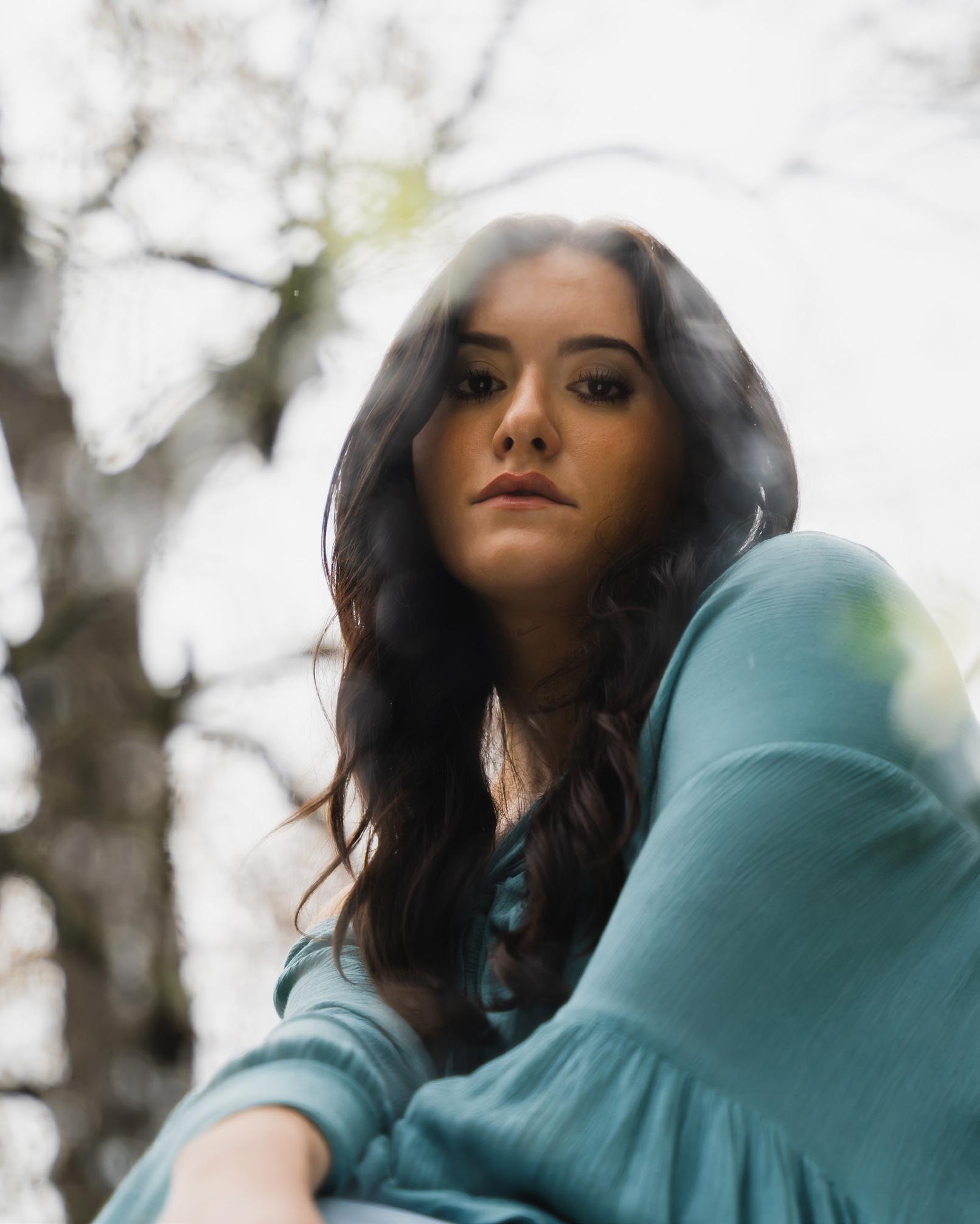
Gratitude improves your ability to experience joy, enjoy memories, maintain excellent health, overcome challenges and forge close, personal bonds. It is human nature to stress and focus on the bad rather than taking a moment to breathe in the good. We might be so focused on dreading an important meeting on Monday that we forget to enjoy ourselves over the weekend. However, we can practice gratitude after a rush of joy following a random kind gesture or catching up with an old friend. Fortunately, gratitude can be practiced on a daily basis, and the small things in life can end up contributing to an overall positive outlook.

Chances are you’re wearing mascara right now. How about concealer? Or blush? If you are wearing any of the above, take a moment to consider why you put on makeup this morning.
On a typical day, many women start their mornings by applying makeup when getting ready. For lots of women, and even men, putting on makeup is part of their everyday routine; they don’t even think twice about it. After incorporating makeup into your daily routine for so long, it begs the question: Why do you put on makeup? Is it for yourself? For men? For those around you?
Women have been wearing makeup and enhancing their complexions for hundreds of years. In fact, Shiseido is the oldest cosmetics company, founded back in the late 1800s in Tokyo. It started out as a pharmacy and has
transformed into the company we know today. The concept of makeup has evolved over the decades, of course, but the act of enhancing your facial features with makeup has stayed linear. Every woman wants to feel beautiful; over the years, that has become synonymous with wearing makeup. However, some people (typically men) have a lot to say when it comes to makeup. They claim it’s unattractive when women wear too much makeup or never leave the house without it. But when a woman takes her makeup off or chooses not to wear it one day, she suddenly looks like a “catfish” or is seen as a completely different person. It’s a harmful double standard, and it can quickly lead to negative stereotypes. Makeup is typically associated with enhanced beauty, using products to make women appear, and feel, more beautiful. Thanks to social media and society today, many women use makeup to
 PHOTO | BRENDAN ANTROSIGLIO DESIGN | EMMA MITCHELL
PHOTO | BRENDAN ANTROSIGLIO DESIGN | EMMA MITCHELL
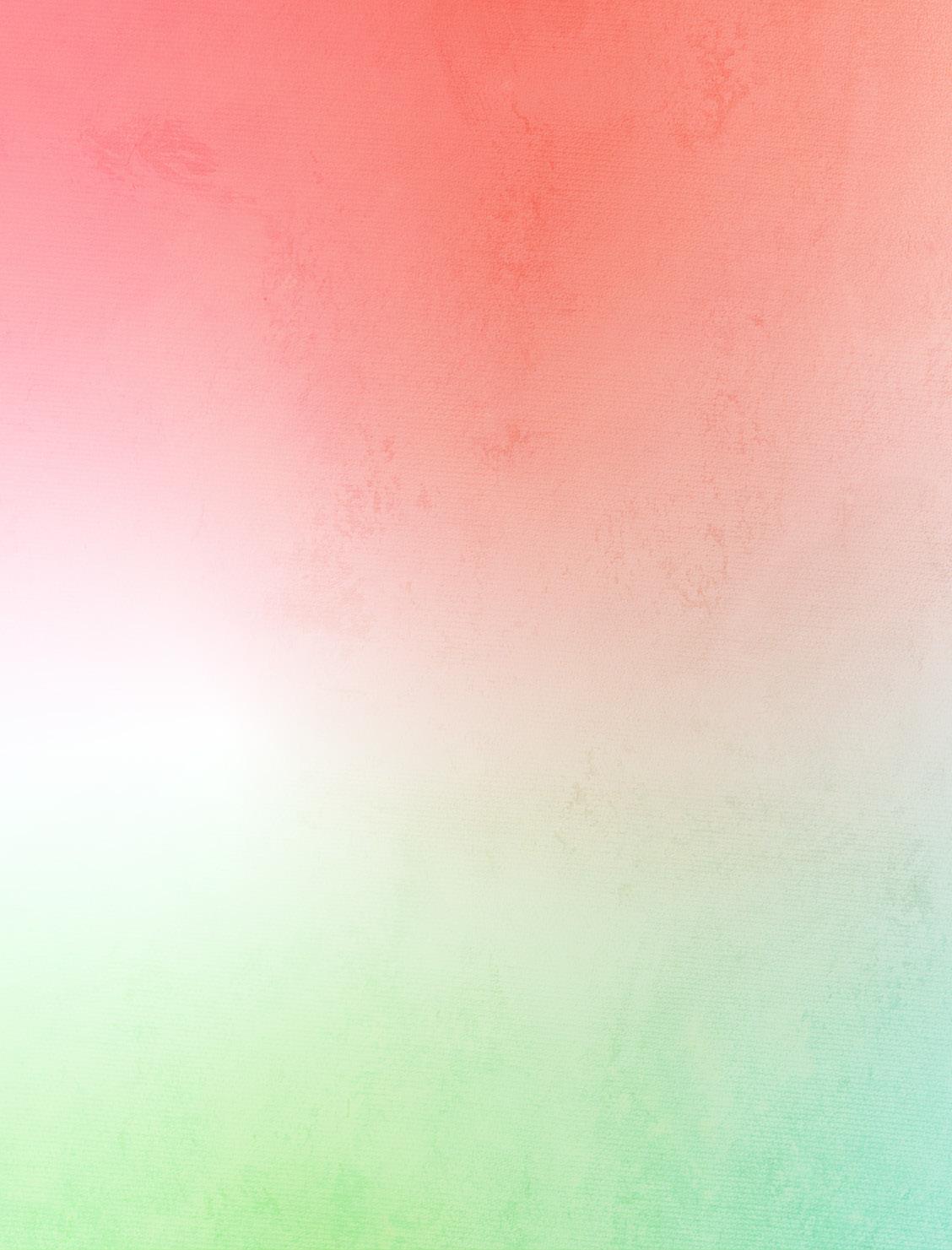
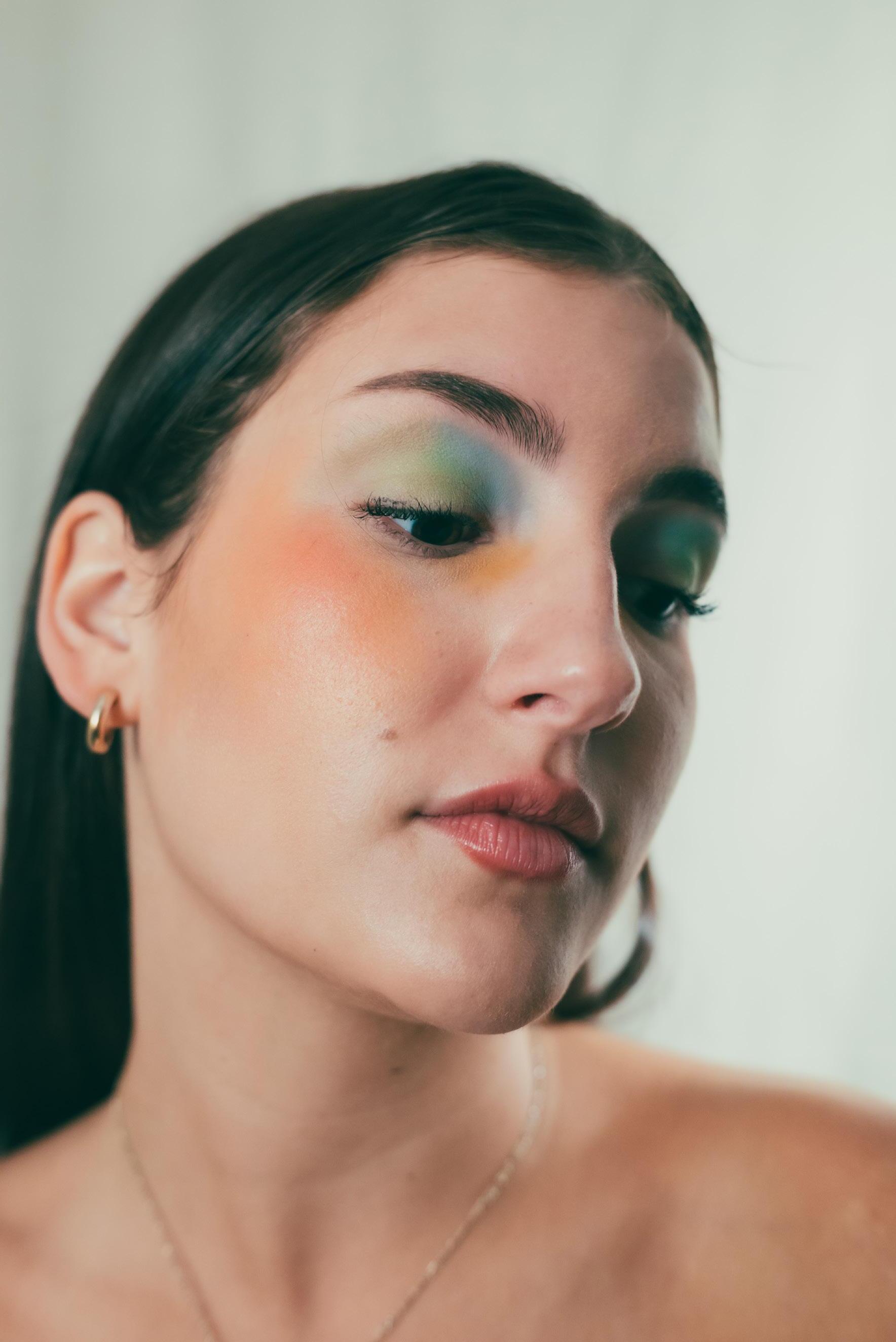



try and elevate themselves to the traditional “beauty standard,” or to what they believe women should look like. It is rare to see “attractive” women without makeup these days since makeup has become such an integral part of the beauty standard. According to Science of the People, an estimated 44 percent of American women do not leave the house without makeup on. Wearing makeup is often associated with physical attractiveness, and it is used as a tool to enhance
Because of this strict beauty standard that society has set, women have been raised under the impression that they need to be “pretty.” Being “pretty” will take you far in life and ensure success in the future. In reality, these things have very little to do with appearance. But let’s face it — society's expectations and opinions of what women should look like can be hard to ignore. If all of my friends are wearing makeup, why wouldn’t I? The truth is that although it may not be right, according to Science of the People, being deemed as “attractive” leads people to be treated more favorably in life. Since wearing makeup is often associated with physical attractiveness, it is assumed that women wear makeup to enhance their appearance. Besides wearing makeup for the preferred sex, wearing makeup and being seen as more “attractive” is also helpful for building friendships and forming other connections. In saying this, it is common for women to try to impress other women more often than they try to impress men.
The power of makeup is extraordinary because of the confidence it can give and the creative outlet it can be. Makeup applications can vary from light, everyday makeup to bold, full glam and everything in between. There is no set structure or must-do. You can change up your look every day. For many people, makeup is their livelihood. Thanks to platforms such as TikTok
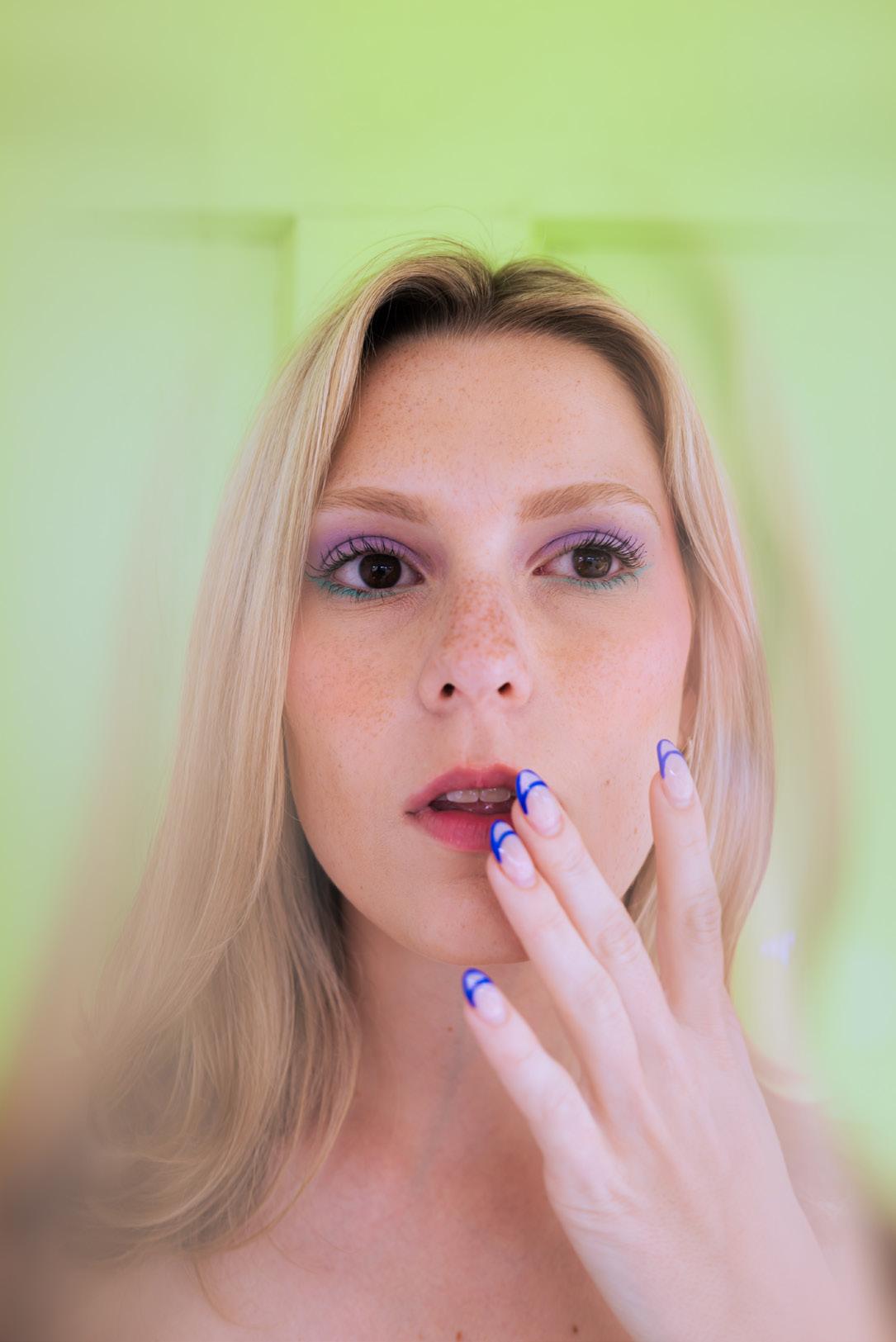
and YouTube, beauty gurus have been able to make a livelihood off of reviewing makeup products and comparing brands and products. For them, wearing makeup is way more than just a hobby. The beauty industry has grown astronomically in recent years, and it’s currently worth an estimated 571 billion. This growth has contributed to more people experimenting with makeup and having fun exploring the unlimited products. Makeup is an art form. It is a powerful tool that can artfully craft a face as if it were a canvas. It can mask, blur, enhance and brighten features, completely transforming someone. A lot of
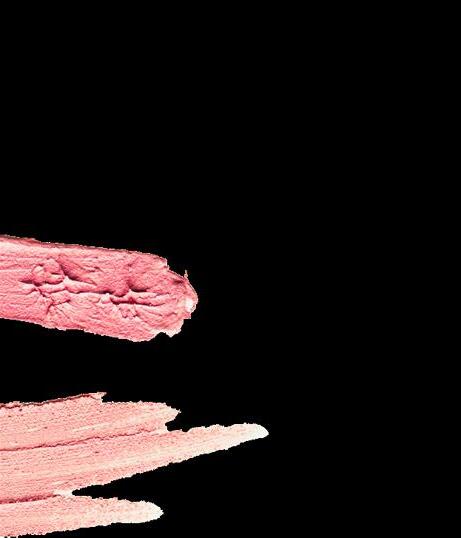
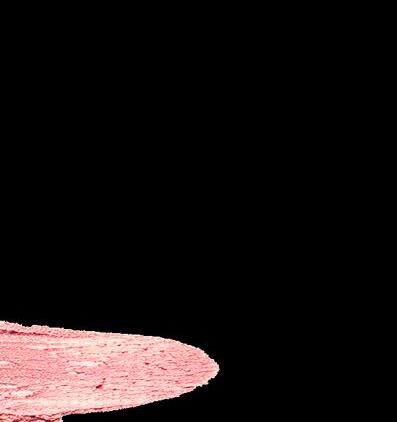
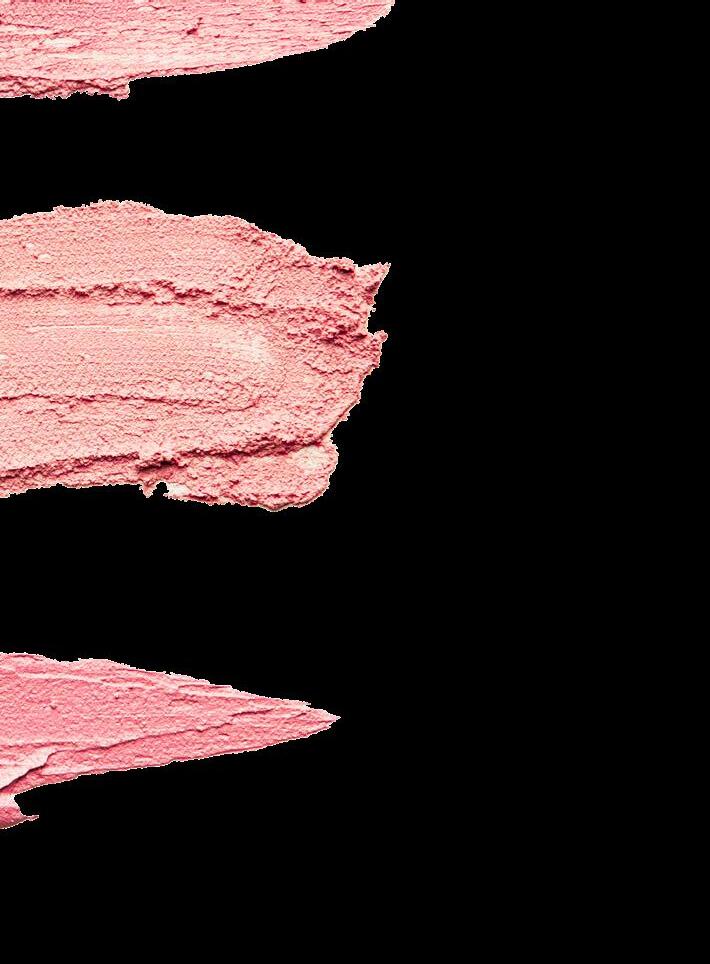


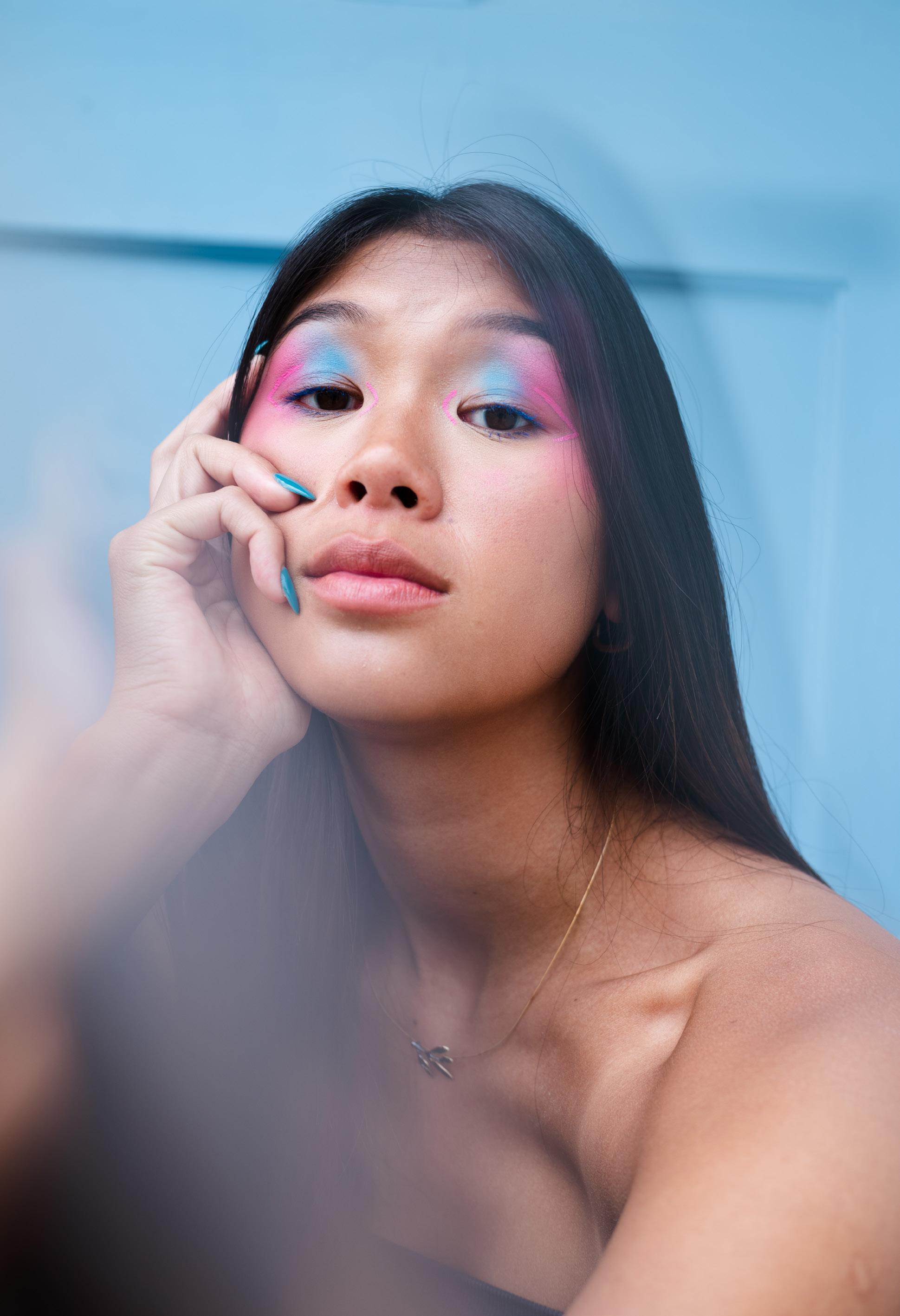
people assume that women wear makeup to impress men, but on the contrary, women most often wear makeup for themselves. Not only can makeup make people feel more beautiful and confident, but it also gives the illusion of looking more awake and alert. Concealer under the eyes covers the eye bags we all have from not getting as much sleep as we should. Highlighter and blush make us look alive and glowy, while mascara opens and brightens our eyes. The illusion of looking awake and alert gives off a sense of confidence and professionalism that many people desire. We often feel that putting on makeup “completes the look.” Getting ready for the day and putting on a cute outfit just doesn’t feel complete without makeup. Of course, this is not the case for everyone. But, in general, makeup is the finishing touch that ties everything together. In the corporate world, many women worry that if they don’t wear makeup, they will not look old enough or professional enough in the workplace. Social media has a huge influence on the beauty industry and the perceptions of how society feels about makeup. It can be seen as a negative if a woman chooses to never wear makeup, but it can also be seen as a negative if a woman wears too much makeup all the time. In other words, everybody will always have an opinion about their makeup “preferences.”
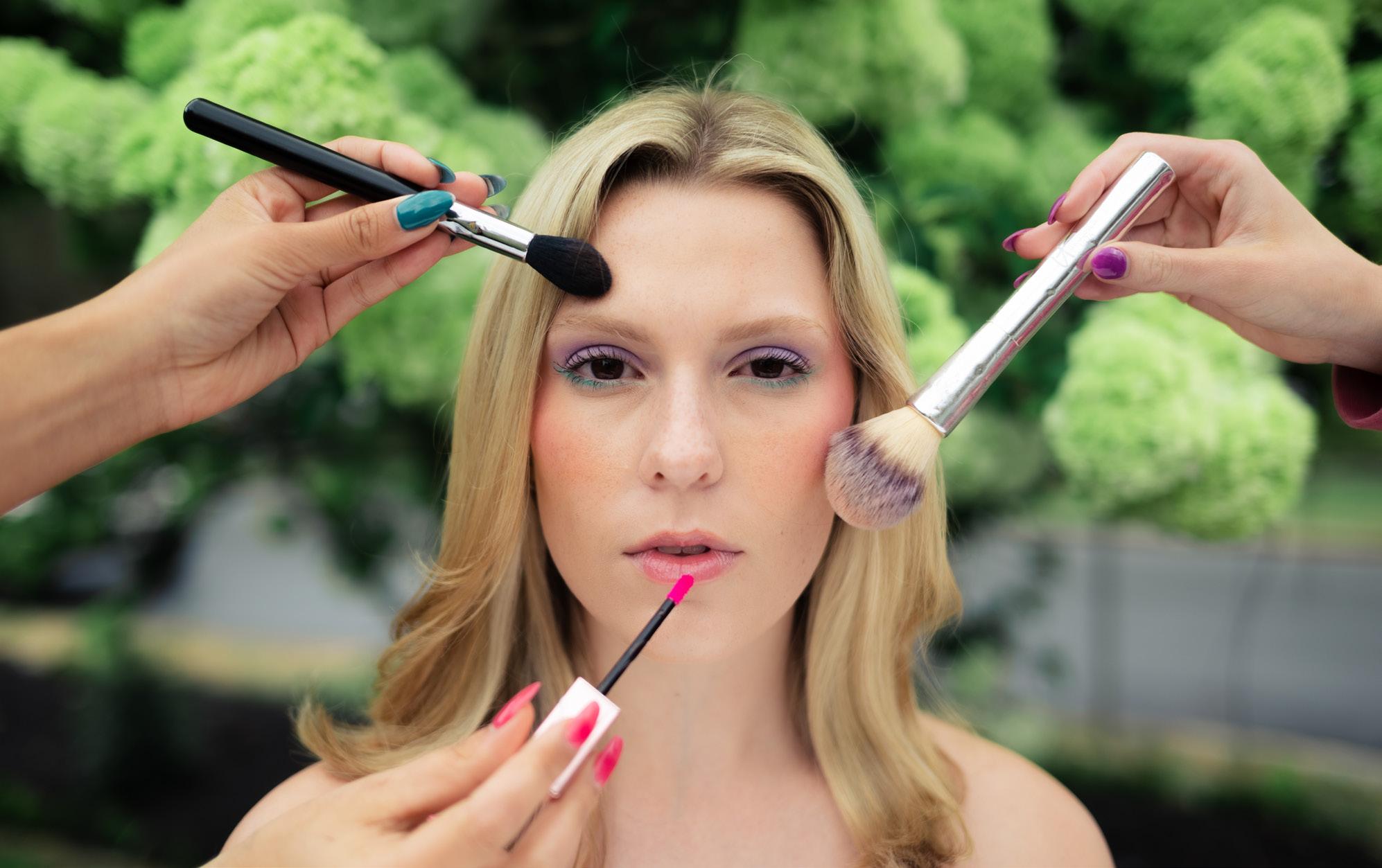
Lastly, makeup application can be a stress reliever for some people. Women wake up and look forward to putting on their “face” every day. For them, it’s fun to transform themselves and try out different looks and products. The process is about so much more than just the makeup. “Get ready with me” videos have become a popular series of videos to film and post on TikTok and other social media platforms. Watching people highlight their routines and show their different products is fun and entertaining. These types of videos have helped popularize the industry even more. Bringing more awareness to the industry and normalizing the everyday application of makeup has definitely helped change stereotypes and perceptions about it.
In the end, makeup isn’t going anywhere anytime soon. The industry will continue to grow and expand with the new trends and influencers on the rise. Regardless of why or for whom we wear makeup, we should wear it proudly! Rock that bold lip or winged liner. Don’t be afraid to wear lipstick to the grocery store or go without makeup to a meeting. Be mindful of the impression you are going for, but don’t let society's beauty standards control your life. Makeup is meant to be fun, so let it be!

The United States accounts for nearly five percent of the world's population, yet it makes up an estimated 20 percent of the world’s prison population. That means that every one in five people incarcerated worldwide can be found right here in the United States.
The impact of mass incarceration in America is so profound that close to 113 million individuals have a direct relative who is currently in the system or has gone through the system at some point, according to the American Civil Liberties Union.
There is a very evident lack of sustained, successful, re-entry efforts being made in this country; the recidivism rate for people released from prison in the U.S. is 82 percent. This means that 82 percent of individuals end up reincarcerated within a three-year span after being released. This discrepancy occurs when a system is built upon the idea of retributive justice instead of restorative justice. The emphasis is not on rehabilitation; the emphasis is on punishment — a punishment that in many ways can serve as a neverending sentence.
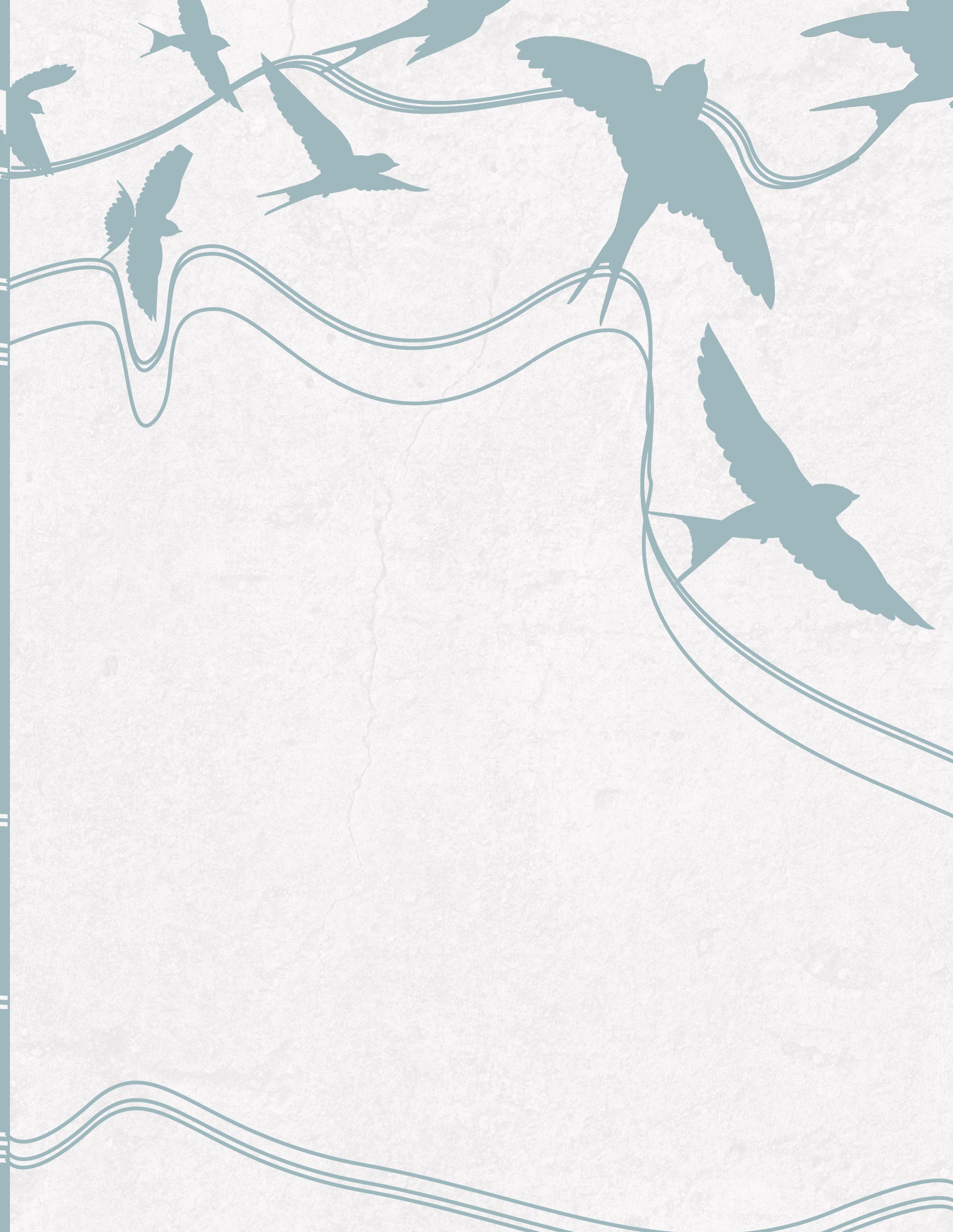
Before being released from jail or prison, an individual must show proof of housing. But if someone has a criminal record, most agencies will not accept their application until at least seven to 10 years have passed. On top of this, individuals are faced with immediate financial responsibility and will likely
be responsible for paying at least one of the following: parole fees, probation fees and/or drug taxes. That’s not to mention the cost of living in general: housing, electric bills, water bills, food and other necessities.
Then, there is the matter of finding employment. To get a job, an individual needs to have all their vital records including a valid state-issued I.D., Social Security card and/or birth certificates (many people leaving the prison system no longer have access to their vital records). Of course, there is also the difficulty that comes with not only finding a job but sustaining employment. Bear in mind that for people reentering society, keeping a job can be challenging for many reasons, including, but not isolated to, lack of access to mental health resources, unhealthy relationships, substance abuse, trauma, etc. The list of barriers goes on and as a result, it’s easier for people to revert back to the same path that got them sent away in the first place.
So, how can communities and grassroots efforts make a difference? The Edge had the opportunity to sit
with a local organization to gain some insight into their work toward a solution.
On the corner of Friendly Road in Burlington, North Carolina, you can find an organization by the name of Sustainable Alamance. Sustainable Alamance is a nonprofit organization dedicated to assisting individuals coming out of prison with finding and sustaining employment. Phil Bowers is the organization’s founder and has served as Executive Director for the past fifteen years. Since opening, dozens of men and women have gained full-time employment, family relationships have been restored, millions of dollars have been created in local economic impact and, most importantly, lasting relationships have been made.
“If a young child is seeing the only person not struggling in their neighborhood is the drug dealer, why are we surprised when they want to be like them? We as a society have to ask ourselves what better options have we given them,” says Bowers.
At Sustainable Alamance, the core belief is that everyone is inherently deserving of a second chance and capable of change when they are given the resources to do so.

The organization refers to the community of people they work with as clients. New clients’ cases are reviewed by Emily Flack, the case manager. Flack then crafts a personalized plan of action to address the individual needs of each client. Furthermore, the organization offers numerous services that people in the community can call in for such as lawn maintenance and moving. They then provide clients with the materials needed to do the job.
Kivette Smith, the organization's job coordinator, receives a request for a given service and communicates
the necessary details to the clients interested in working that job. The profits made are shared among each client who worked on that job.
The purpose of offering services to the community through the organization is to provide clients with direct access to job opportunities and allow them to accumulate job references until they are able to find full-time employment.
Sustainable Alamance is also working to change the conversation around criminal justice in the community. Without knowing someone's story, there is an underlying stigma around people who have a record of any kind. For Sustainable Alamance, an organization located in a predominantly southern and conservative community, misconceptions about their work and the criminal justice system are not rare.
“The misconception that’s the most harmful is that the general public does not understand that the vast majority of cases are adjudicated by plea bargains rather than evidence and conviction by their peers,” Bowers explains.
For our readers wondering why plea bargains are so common, Bowers explained to us that it’s often because they are under the impression it is in their best interest. To elaborate, if an individual does not have the means to make bail, they are forced to sit in a cell awaiting trial. During that period, they might receive a visit from a court-appointed lawyer or public defender. However, in some cases, they may be waiting until the day of their trial to have a chance to confer with their appointed counsel.
As Bowers exclaims, “One day they do show up and say the DA has offered a plea bargain for a minimum sentence and guilty plea. If you choose to go to court and
fight it, for example, they will say you could go to jail for 15 years. But, if you take the bargain, you will only go for three.”
For someone who has been sitting in jails for months on end with only the guidance of their counsel, they think a plea bargain is their quickest path to get home. In reality, it is a lifetime conviction that will follow them far after they are released.

Here are some final takeaways to consider:
Mass incarceration does not rehabilitate or protect. What mass incarceration does is disproportionately impact BIPOC and low-income communities with little consideration as to why they are more vulnerable to the system in the first place. Until we acknowledge something is unjust and broken, we cannot fix it.
Sustainable Alamance serves as a testimonial not only to what acknowledging this looks like, but also to the impact of grassroots efforts and social good that can come from choosing to put resources into people instead of into prisons.
There’s no better feeling than taking your bra off after a long day and letting everything hang loose. Being freed from a bra can be intimidating, as we’ve all been taught from a young age to wear one, but it can also be a very liberating experience. During COVID-19, many women took the plunge and took an extended break from wearing bras. This allowed women to rethink their decision about wearing a bra and whether or not it’s even beneficial. Spoiler alert: many women ditched the bra permanently.
Generation Z has been the reigning champion of activism and empowerment, hence the reason why the no-bra movement has been on the rise and is continuing. Many Gen Z’s see bras as an accessory and no longer an outfit staple. Today, many women are replacing bras with scarves, bandeaus or nothing at all.
Everyone should be allowed to leave their bra in their closet and receive no judgment. If men aren’t forced to wear bras, then women shouldn’t either. When we scroll through our social media and stumble upon celebrities who are transparent about not wearing bras, we admire them. Braless icons such as Kate Moss, Florence Pugh, Rihanna and Bella Hadid all taught us that it’s inspirational to take back ownership of one’s own body and not be told what to do.
The modern-day brassiere was invented and patented by a New York activist, Caresse Crosby, as she was frustrated with the whalebone corset that ripped through dresses and ruined them. It wasn’t until the 1930s that the brassiere was shortened to a bra. The brassieres took off in America when they first appeared in the DeBevoise Company’s advertisement describing their newest bra technology. Crosby would sell her bras to her friends for just one dollar. We wish we were her friend! She later founded the Fashion From Brassiere Company, a twowoman factory in Boston. Crosby sold the patent to the Warner Brothers Corset Company for $1,500, and the Warner Brothers ended up making more than 15 million from the design.
The development of the underwire bra started in the 1930s, even though it didn't gain popularity until postWorld War II. Frederick Mellinger created the first padded bra in 1947, followed by a new invention of the push-up bra a year later called “The Rising Star.” Three decades later, childhood friends Lisa Lindahl, Hinda Miller and costume designer Polly Smith all created the Jogbra, which is now called the sports bra. In the 1980s,
bras were the foundation of a woman's feelings and looks. Many models and celebrities, including Cindy Crawford and Naomi Campbell, used extravagant bras for red-carpet events, which became the norm.
The late 1990s brought the infamous brand Victoria’s Secret. Every cool girl owned a bra from Victoria’s Secret, leaving girls dying to add VS to their wardrobe. The Victoria's Secret Fashion Show was a new way of introducing the latest bras from the runway. Supermodels such as Tyra Banks, Gisele Bundchen, Adriana Lima and Heidi Klum began to build the brand’s image as “sexy, fun and cool.” The Bombshell Bra became the brand’s most iconic bra, with Kylie Jenner crediting the bra for her cleavage. During the COVID-19 quarantine in 2020, bralettes became one of the most popular bra options due to comfort and lack of underwire. Because of this, major lingerie brands such as Victoria’s Secret had massive declines in their sales and the brand as a whole. However, there were many other reasons why Victoria’s Secret became a flop. Bralette sales increased by five percent during the pandemic, while underwire bra sales plummeted. After the comfort of being at home for 18 months, people were tired and simply no longer wanted to wear a bra.
The Miss America Pageant of 1968 was never meant to be a political statement, but it became a feminist rebellion. From the beginning of time, women have always been looked at as the caregiver — the one who sits back and listens, and the one who remains silent. Women became tired. The 1968 revolt was created by feminist icon Carol Hanisch who publicized the phrase, “The personal is political.”
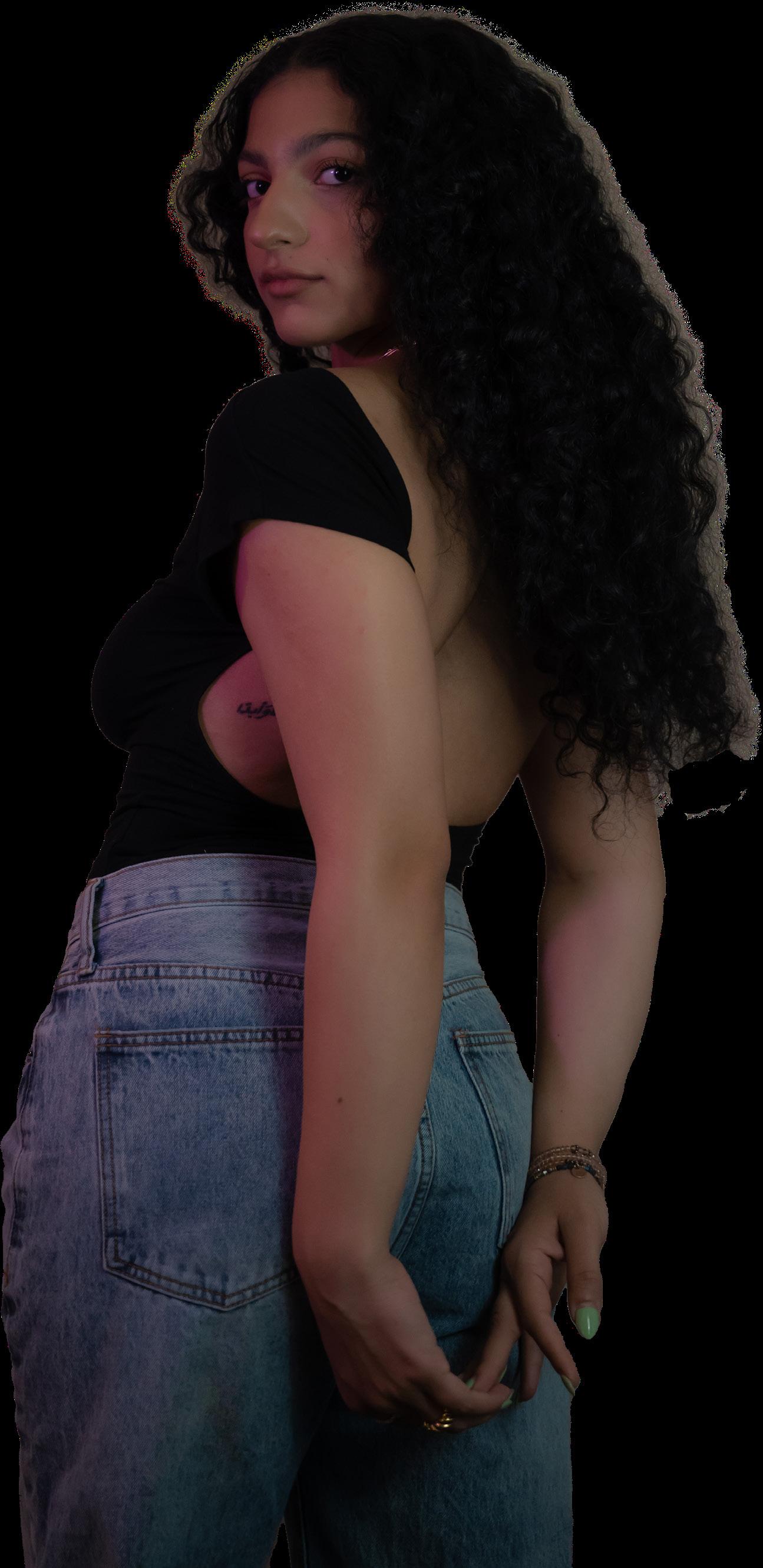
 PHOTO | REESE GARRITY
DESIGN | SHAINA HEITZNER
PHOTO | REESE GARRITY
DESIGN | SHAINA HEITZNER
The Miss America Pageant became an instant target for Hanisch and other feminists due to the excessive rules it contained, such as maintaining a certain weight, always looking “put together” and always remaining lady-like. Hundreds of women marched the streets of Atlantic City on September 7, which happened to be the same day as the pageant. The protest included a “freedom trash can” in which women threw away all their physical manifestations including wigs, false eyelashes, curlers, girdles, bras and issues of Cosmopolitan, Ladies’ Homes Journal and Family Circle. Many of the women participated in a burning bra ceremony, which consisted of angry feminists setting fire to their bras in demand of one’s own liberation. The 1968 protest became an inspiration for many women, and the mindset of wearing no bras trudged through the 1970s. The symbol of the bra represented the fight for the liberation of women’s rights and for freedom from misogyny.
When you think of self-love, what comes to mind? Some might say that self-love involves implementing a daily skincare routine, journaling thoughts, eating healthy, exercising and, most importantly, taking a bra off. Self-love is all about engaging in activities that will
benefit you and could create possibilities for change. Some might question whether or not being braless makes an impact on your mental health, but when you’re practicing the daily habit of not wearing a bra and you’re putting yourself first, it can be a form of self-love. Deciding to free your breasts for the day can be quite a liberating feeling.
Do you remember the first time you went out in public without a bra? You felt the initial panic of your heart racing and constantly thinking about whether or not you’re being judged by individuals. But, why should we feel this way? We have been taught from the beginning that wearing a bra is the norm for women. Once we have deconditioned our mindset from constantly wearing a bra to becoming braless, we won’t feel as embarrassed and will become more comfortable with our bodies and love ourselves just as we are. You could even begin loving and accepting other parts of your body, too.
Every woman is beautiful, and there is no denying that. It’s common to feel vulnerable and uncomfortable when taking the first step to becoming braless, however it’s a true representation of female empowerment. Owning your body and not being afraid of showing some skin is a step closer to loving and accepting your true self, and it can even make you appreciate other women’s bodies as well. Ladies: it’s time to ditch those irritating bras and take back your body!
Summer once represented sunkissed hair, tanning by the beach and relaxation from the woes of the rest of the year. In his song “Feels like Summer,” Childish Gambino flips the notion of summer on its head. As global temperatures rise, there is little relief from the heat, drought and pollution long after summer has ended. Gambino isn’t the first artist to pen songs about the rapidly warming planet. The feeling that something is
terribly wrong is shared by our generation and the artists that represent us. Wildfires scorch Alaska; the entire city of Venice, Italy is sinking beneath the waves; and, parts of the Yangtze River in China have dried up, leaving millions in drought. The Earth is in trouble. Summer, it seems, is here to stay.

The European Union’s Copernicus Climate Change Service described 2022 as a “year of climate extremes,” with record-breaking heat waves in Europe, the Antarctic sea at its lowest sea level on record, deadly flooding in Pakistan and widespread fires in California.

The past nine years have been the warmest years since modern record keeping began in 1880, meaning that in 2022, Earth was warmer than it was in the 19th century by about 2 degrees Fahrenheit.
“The reason for the warming trend is that human activities continue to pump enormous amounts of greenhouse gasses into the atmosphere,” said Gavin Schmidt, the director of GISS — NASA's leading center for climate modeling.
While there was a short reprieve in 2020 due to COVID-19, NASA scientists have determined that carbon dioxide emissions were the highest on record in 2022.
Our generation is acutely aware of the damage that we're causing to the planet. We've grown up with climate change in the news, plastic pollution in our oceans and wildfires burning out of
“You can feel it in the streets/On a day like this the heat/It feel like summer”
- Childish Gambino, Feels like summer
control. It's hard not to feel a sense of grief and helplessness in the face of such overwhelming destruction. We turn to art, to music, to public figures who promise a better tomorrow. We turn against plastic straws and grocery bags. We turn against each other. Someone, anyone, has to do something.


This acute awareness has given rise to a phenomenon known as “climate anxiety,” the notion that the Earth is finite and that we are destroying it at an alarming rate. It can often be accompanied by feelings of grief and a call to action, but it's difficult to reckon with when we exist in a society that relies so heavily on consumption and capitalism. There is a dissonance between wanting the “American Dream” while also being aware of what that means for the Earth.
The American Psychological Association refers to climate anxiety as “the chronic fear of environmental cataclysm that comes from observing the seemingly irrevocable impact of climate change.” Google searches for climate change skyrocketed by 565 percent in 2021. People are paying attention.
Celebrities and companies have built entire brands on climate justice, with Leonardo DiCaprio, Prince Harry, Meghan Markle and others lending their voices to the cause. Many outlets are calling climate anxiety the newest trend, but that couldn't be further from the truth. It's clear that climate anxiety is not a trend. It’s not going away anytime soon, and it's a topic that demands our attention.
climate disaster escaping to a utopian land, presumably leaving behind millions of people who could not afford a coveted plane ticket.
The American Dream is often associated with the pursuit of wealth and material success. But as we become more aware of the environmental consequences of our consumerist culture, it's clear that this version of the American Dream is unsustainable. Instead, we need to redefine the American Dream to include
In her song “Leader of a New Regime,” Lorde sings about the survivors of a
“Wearing SPF 3000 for the ultraviolet rays/Made it to the island on the last of the outbound planes” –– Lorde, “Leader of a New Regime”


"As we grapple with the impacts of climate change, it's impossible to ignore the fact that future generations will be the ones most affected by our actions."
PHOTO | REID DAHILL DESIGN | PETER DESANTIS
sustainability and social responsibility. This means prioritizing the health of the planet and the well-being of all people, regardless of their socioeconomic status.
Success is often measured by material possessions. This culture of excess has contributed greatly to the climate crisis. From single-use plastics to fast fashion, our consumerist society has normalized practices that are incredibly harmful to the planet.
According to a report by the Intergovernmental Panel on Climate Change (IPCC), we have until 2030 to significantly reduce our carbon emissions to avoid catastrophic levels of climate change. This means that we need to make significant changes to our lifestyles, including reducing our consumption and waste. As we grapple with the impacts of climate change, it's impossible to ignore the fact that future generations will be the ones most affected by our actions. The consequences of our collective inaction will be felt for generations to come.
For many young people, the knowledge that we are leaving a damaged planet for future generations can be overwhelming. The weight of this responsibility can be paralyzing, but it can also be a powerful motivator.
pandemics, pollution and natural disasters.
In 2019, 15 members of the U.S. Climate Action Network discussed how they could create a large social movement to address the climate crisis, taking inspiration from past successful social justice movements. But just like the #MeToo movement, the labor movement and the healthcare reform movement before it, the climate change movement caters to and represents an undeniably white audience. Miya Yoshitani, the executive director of the Asian Pacific Environmental Network (APEN), told Climate Home News that the intersection of poverty, racism and pollution has impacted communities of color for decades.
For instance, in California, a plan designed to reduce emissions by making companies pay for carbon credits effectively concentrated polluting industries near communities of color. Yoshitani called these “sacrifice zones.” The money raised would fund California’s clean energy transition, with a share given to provide affordable housing and water to vulnerable communities. But, Yoshitani said, the scheme was “trading communities’ health for money” and perpetuated racial inequality.
“The need for racial and economic justice to be at the heart of our work has been obvious for communities of color for a long time,” Keya Chatterjee, the executive director of the U.S. Climate Action Network, told CHN.
It's important to recognize that climate justice is inextricably linked to issues of social and economic justice. A holistic approach to climate action must address the systemic injustices that perpetuate the climate crisis.
Billie Eilish croons in her song “All the Good Girls Go To Hell,” that despite the effects of climate change, people are still choosing to ignore the signs that something needs to change. This is partially because climate change does not affect everyone equally.
In fact, Scientific American calls climate anxiety an “overwhelmingly white phenomenon.” We like to say climate change is the great equalizer, but in reality, indigenous and people of color are disproportionately harmed by climate change and its effects like


Ultimately, the solution to climate anxiety is action. It's easy to feel overwhelmed and helpless in the face of such a massive problem, but there are things that we can do to make a difference. We can reduce our carbon footprint by using public transportation, eating a plantbased diet and reducing our consumption of single-use plastics. We can also support politicians and policies that prioritize climate action and social justice.
It's important to remember that the fight for a sustainable future is ongoing. We may not see the effects of our actions immediately, but every small step we take toward a greener future is a step in the right direction. We need corporations, politicians and individuals working together to prioritize the health of the planet for all its inhabitants. Climate anxiety is a valid emotion, but there must also be hope that we can create a more just and sustainable world for future generations.
“Hills burn in California/ My turn to ignore ya/ Don't say I didn't warn ya” –– Billie Eilish, “All the Good Girls Go to Hell”
 AVA GIRARDI
AVA GIRARDI
You know it’s time to start spring cleaning when you open the doors of your closet and floods of sweaters, T-shirts and jeans surround your bedroom floor. Your first response may be to try and clear out everything you possibly can from your closet. No one necessarily enjoys organizing and rearranging their closet, so most resort to the easier option — clearing it out. While the oversized garbage bags under your kitchen sink may be tempting, don't let the dumpster outside be the new home for old clothes that still have potential. The desire to buy new items may stem from what your friends are currently wearing, to the “get ready with me” videos trending on TikTok, but a dark cycle approaches with regularly cleaning your closet. After
you say your goodbyes to your old clothes full of promise, you end up sucked into the trap of unsustainable fashion. If you’re concerned about the spring trends, consider reworking your wardrobe rather than disassembling it. When approaching this upcoming season, you can live by the motto “out with the old, in with the new,” but take the old and go beyond just making it new. You might not know where to start if you’re considering updating your wardrobe, but The Edge is here with a guide on ways you can rework your clothes. Whether you add fun patches to old sweatshirts or pursue an interest in knitting vibrant sweaters, the choice is yours — so aim to make your closet your laboratory.
 PHOTO | CAMERON LESLIE DESIGN | CINDA BIRCH
PHOTO | CAMERON LESLIE DESIGN | CINDA BIRCH

Many have been privileged to experience a weekend visit to see their grandma. You walk into her house and she bears gifts, but not the ones you were particularly looking forward to receiving. She hands you a brand new sweater she just knit, and you smile away the pain you feel having to wear that ugly gray turtleneck. You tell her you love it, but deep down you know you’ll place the sweater in the hidden depths of your closet until the next time you see her. A scenario like this has given knitting a lousy reputation, but it's starting to recover as people take a new approach. You don't have to feel obligated to stick to one color when knitting. Instead, opt for a design plan that involves incorporating different colors. Entering the spring season is the perfect time to pick colors that mimic the blooming flowers. Some choices include fuchsia, tangerine, sea green and periwinkle.







While mixing and matching various yarn colors is fun, a cardigan wouldn't be complete without buttons. For whatever aesthetics you want to reach, there is a button that will fit it. Choose a pearl button if you’re aiming for a more nautical and preppy look. Other options include a tortoiseshell button or some large gold stud buttons. If you’re aiming for a more vintage and bohemian style sweater, there are some creative button options to achieve this look. Stick on some colorful resin and floral-shaped buttons, or replace the button with some extra yarn by adding crocheted buttons. Your cardigan is the opportunity to showcase who you are. Be unique and do what makes you feel most confident in your newest piece!
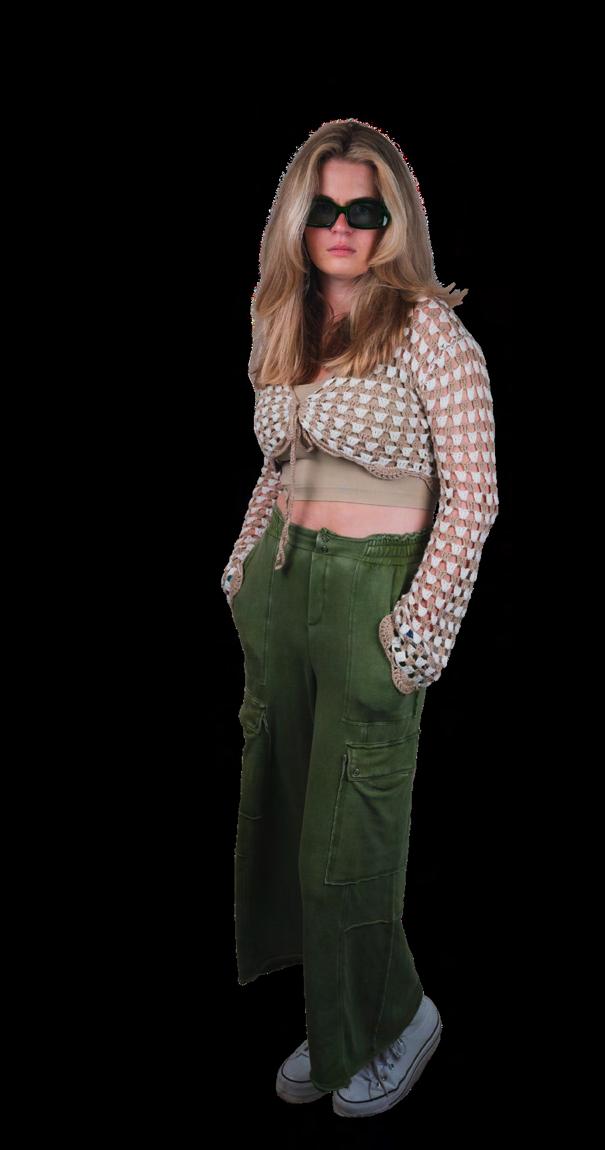


Knitting doesn’t have to solely mean making heavy sweaters and scarves for the winter; it can also be used to make an accessory to dress up an outfit, or a cover-up for a pool or beach day. Knit cover-ups are the perfect, lightweight way to transform an outfit. The best way to go about this is to choose a color that will pop as it lies over the white tank top or crop top underneath. When picking your yarn, look for colors that fit the spring season, such as a grayish blue or papaya orange. It’s essential to consider how you want to knit the cover-up. When creating the sweater, you can include a lack of consistency during the knitting process or keep it more traditional with common stitches. It’s crucial to stick with stitches that will reveal what you are wearing underneath. Some of the best stitches to follow are the cables and eyelet stitch, netted stitch, honeycomb stitch and fans and feather stitch. If you take a different approach and want to reveal most of what you wear underneath, you could aim more for a shrug top. The great thing about a shrug top is that it’s practical, just like a cover-up, but also acts as an accessory that puts your outfit together. The most satisfying part of knitting is when people compliment you and ask where you bought your coverup or shrug, and you can say, “I made it myself.” It’s truly empowering.



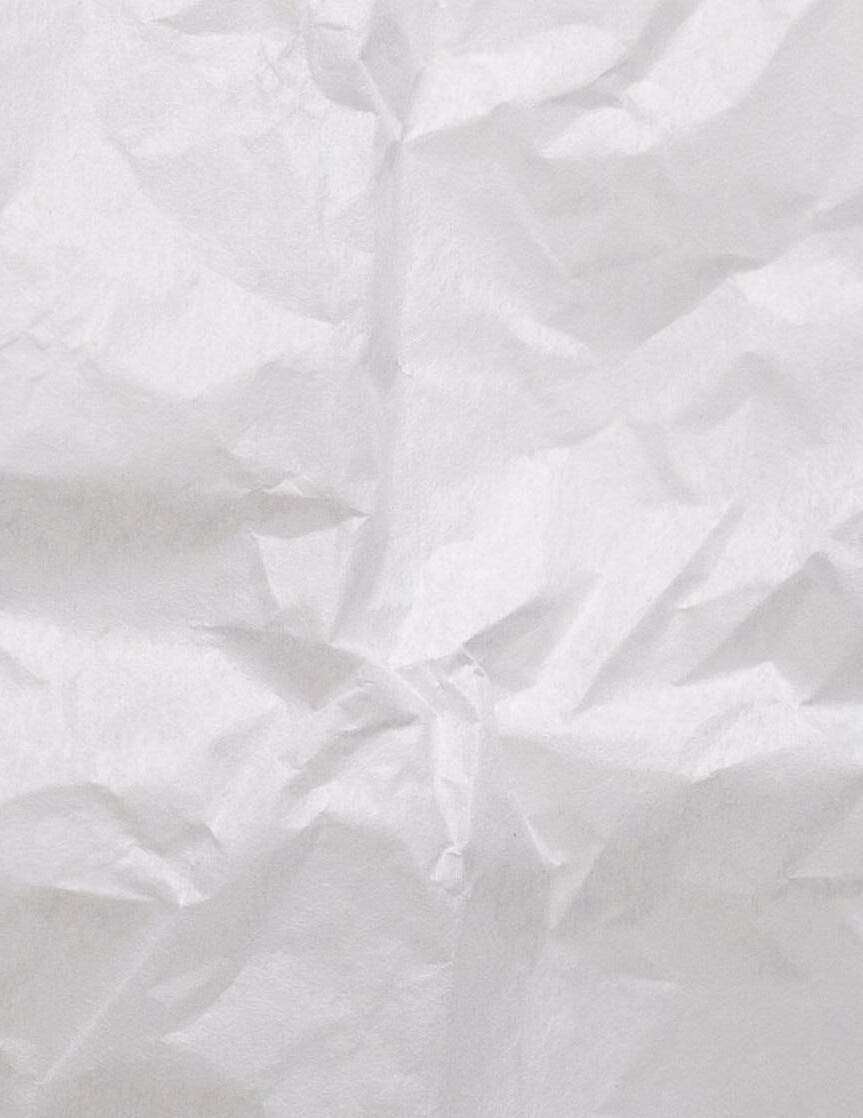
The knit bag has become a hot topic lately, so let’s make your own! You can go about crafting the knit bag in different ways that will fit your style. Try the traditional knit market bag, the perfect accessory for spring and summer. The market bag is ideal for hitting the local farmers market, or as a transportation option for your sunblock and towel during your pool day. This bag is also perfect to accompany a laid-back summer dinner in sandals and a flowy dress. Another option to explore is the chunky knit purse. Adding a chunky knit bag to your collection will make you feel more put together than ever, creating a fun yet sophisticated look to your outfit. If you want to make it more of a shoulder purse that could serve as a school bag, expand the bag and extend the strap for more support. And if you’re in need of an outfit accent, opt for a smaller bag that will lay perfectly on your shoulder.
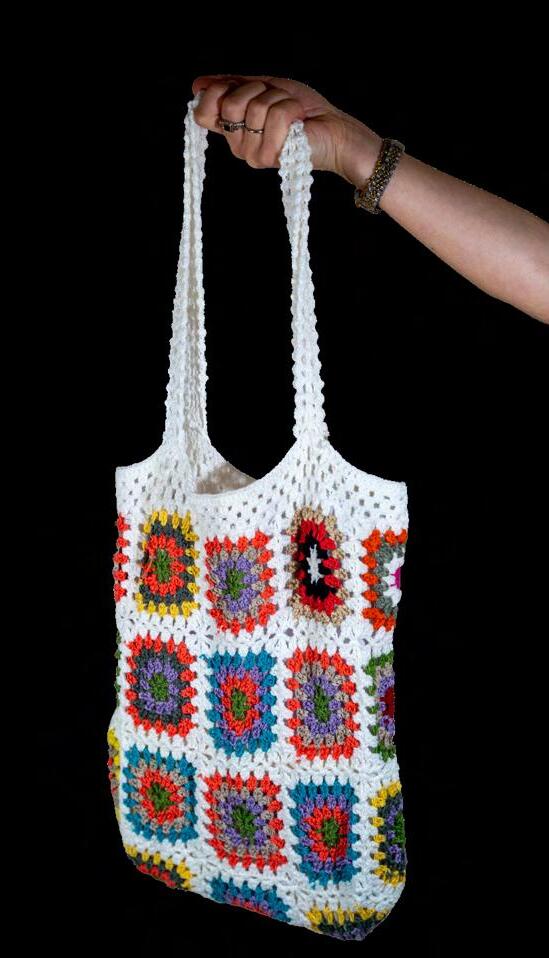
“I MADE IT MYSELF!”

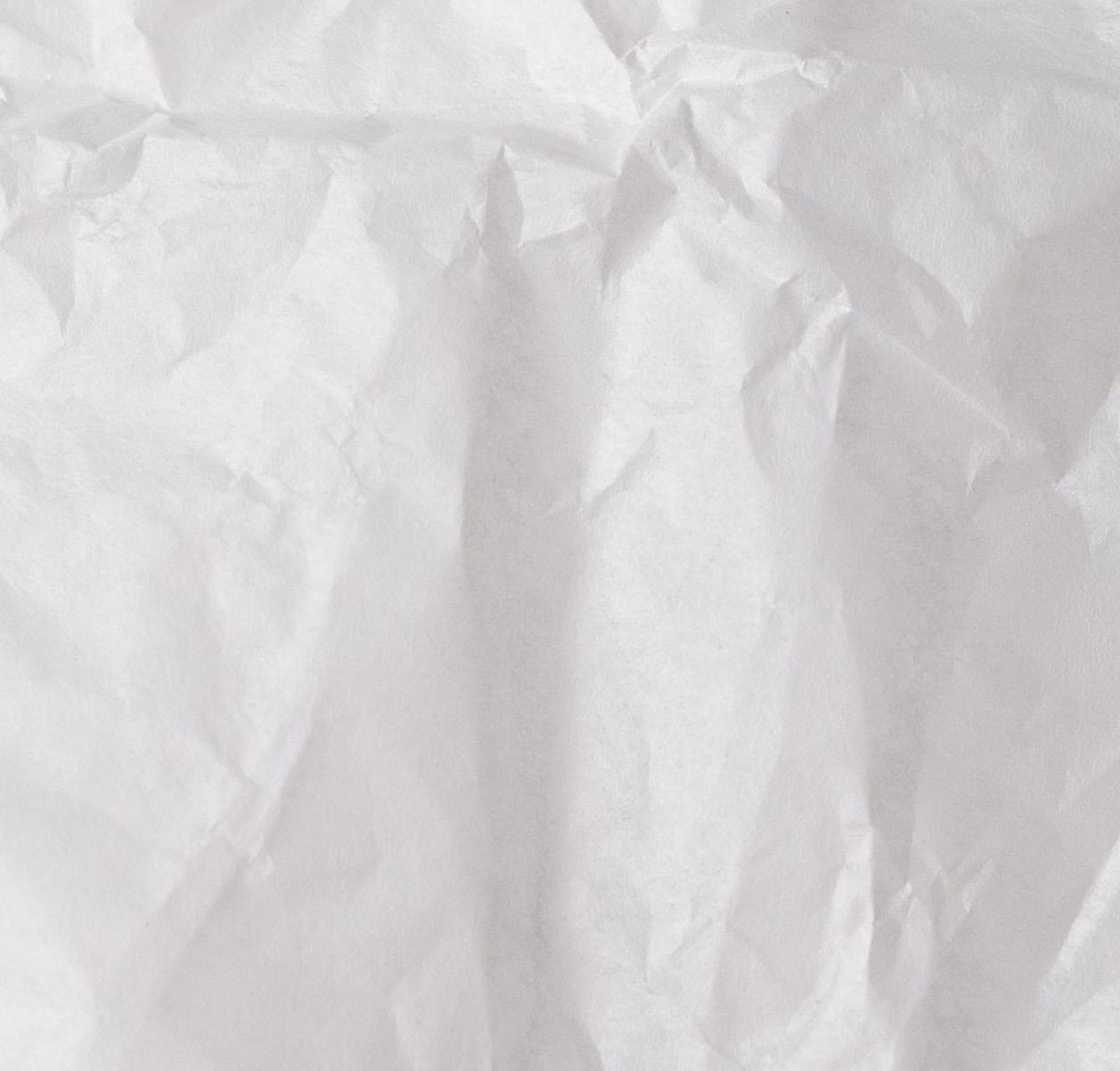
Adding patterns to your knitting projects can be intimidating, but with practice, you can create a one-of-a-kind piece. While you can use different knit stitches to enhance your work, patterns can make your piece pop. The granny crochet pattern has recently become a new sensation. With this pattern, you can go wherever you want with your design. For example, you can use the traditional granny square pattern to start and spice it up with other symbols and designs that speak to you. One option is playing with floral shapes, such as stitching sunflowers or daisies. Your granny squares also do not have to be one color; play around with color combinations! Patterns such as hearts and stars are always trendy, so no matter how much fashion seasons change, incorporating these patterns will give you a timeless piece. If you feel like adding an edge to your piece, fringe is the way to go since it can add that worn-out, vintage look. Fringe can be added anywhere to your sweater, even acting as sleeves. Also, when knitting a sweater or sweater vest, you can transform it by adding some fringe around the bottom. Fringe is the perfect way to add character to your piece. When paired with ripped and light-wash jeans, people will turn their heads to see who and what you're wearing — when it's ultimately your creation.
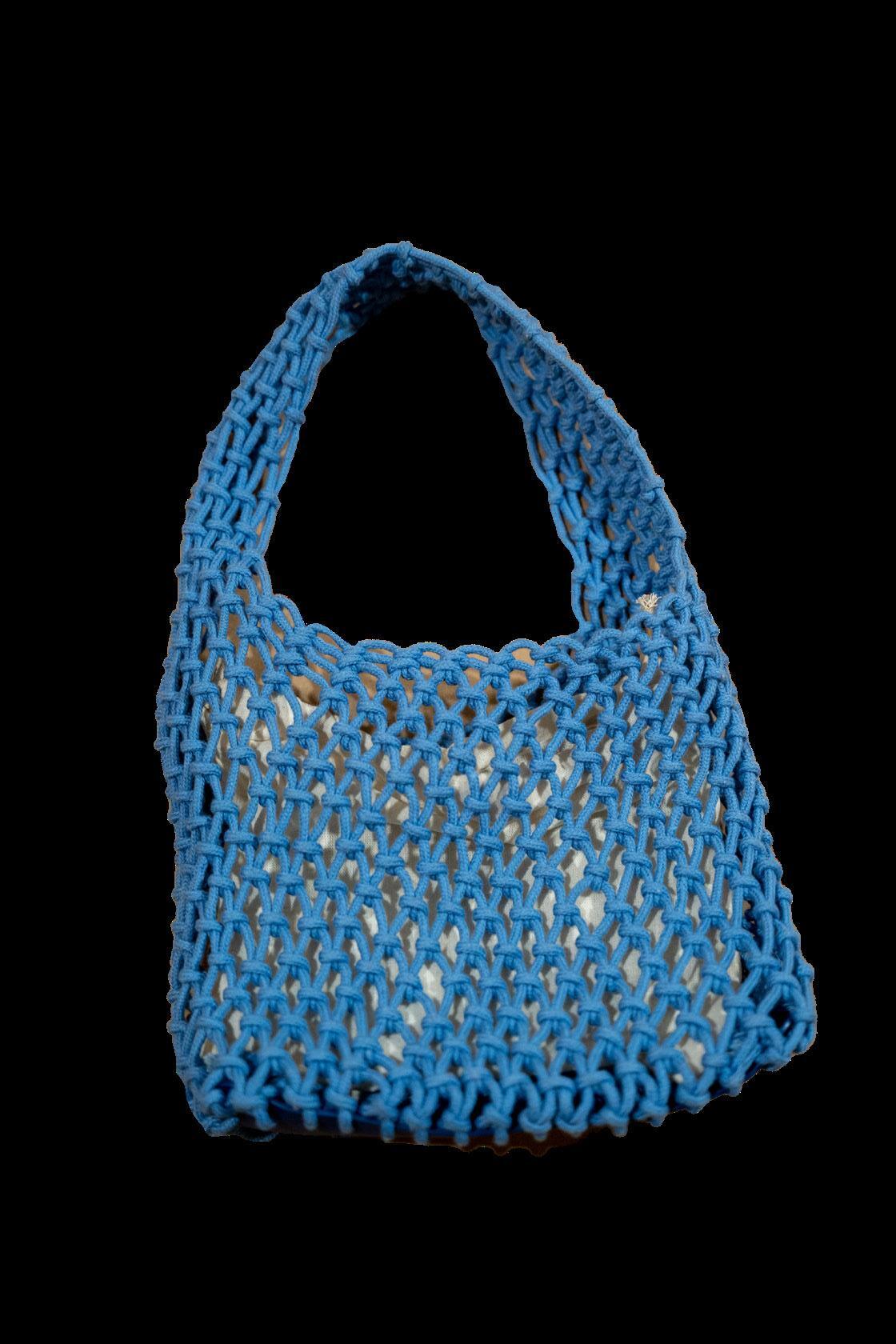


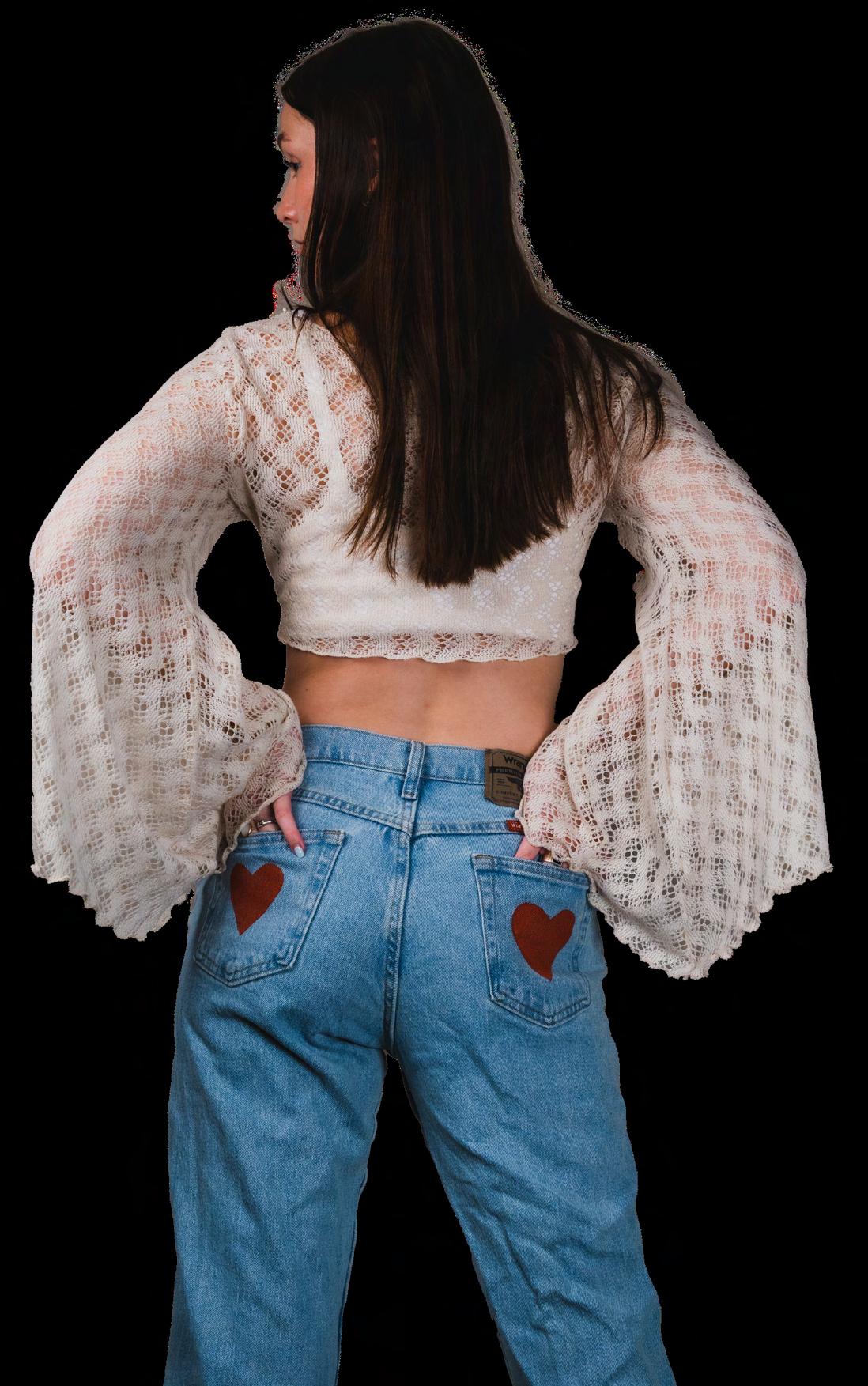
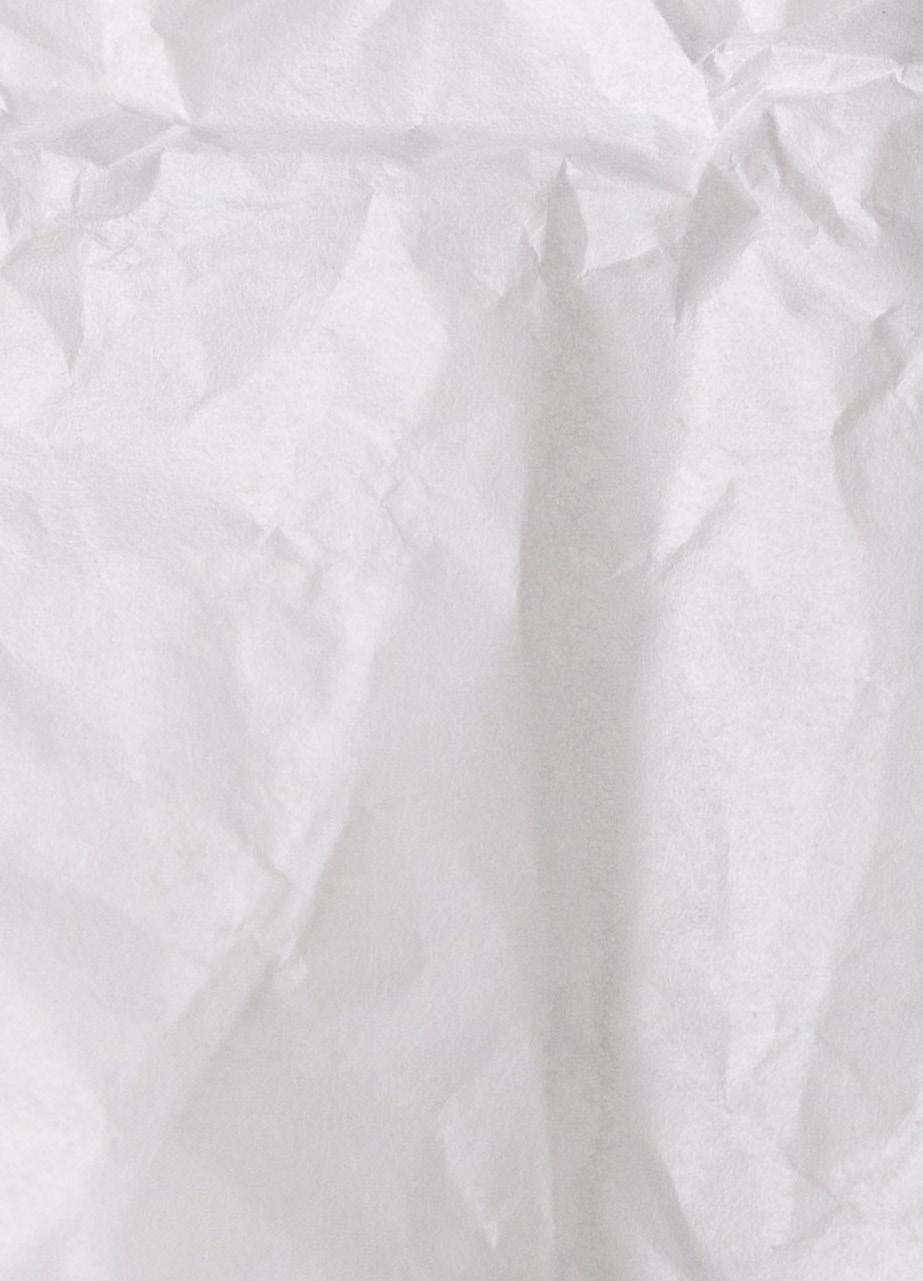
The easiest way to flip your old jeans with rips and mysterious stains into a new piece is by turning them into a canvas. Painting on your jeans doesn't mean it has to be a mosaic masterpiece, but a touch of simple designs to cover up imperfections on your jeans will do the trick. If you want to keep the denim apparent and not completely cover it with designs, you can still add petite elements such as tiny hearts, butterflies and flowers. Painting on the back pockets also makes for a good artistic decision. Like an artist’s blank canvas, your old jeans can become a special creation of your own where you can add patterns, symbols and designs that have meaning and allow you to express your artistic side. Its pockets and specific cuts create a more three-dimensional platform that make your designs come to life. Sometimes, it is difficult to be creative — especially when we need a quick fix for old jeans — so splatterpaint jeans might just resolve the issue. Old jeans will be unrecognizable after a a session of splattering paint.


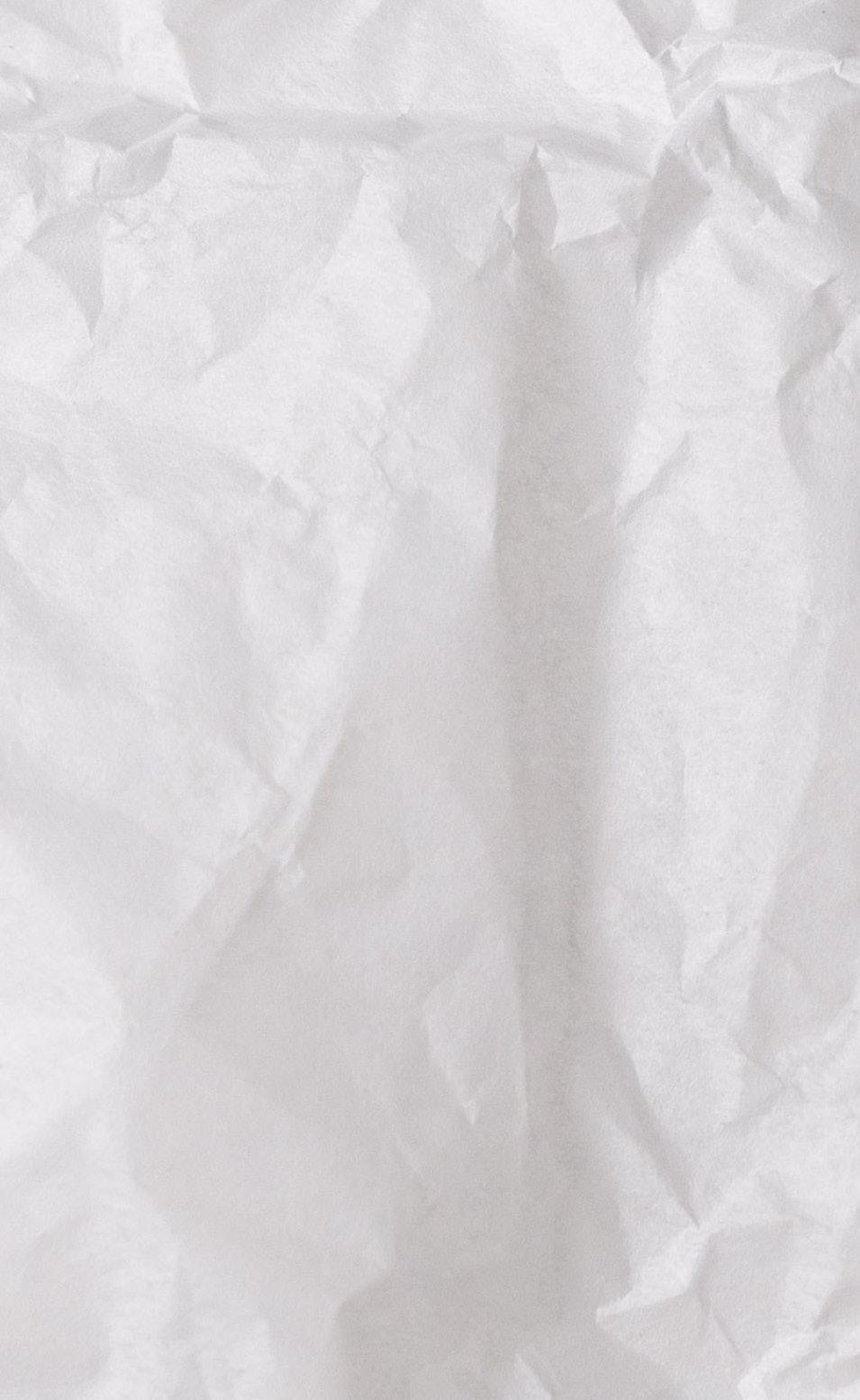
Skinny jeans are long gone, but that doesn't mean they must hit the trash bag. This situation requires some handydandy scissors to do the trick. The process is pretty simple and easy to do at home. First, determine how many inches you want to trim off by trying them on or comparing them to another pair of jeans. After determining the desired length to chop off, take a black marker or white chalk to mark where to cut. Use fabric scissors if you have them, and begin cutting along that line you traced. After you cut your jeans, it's time to distress them. For a frayed look, start by rubbing the hem with your fingers until the fibers from the jeans appear. For an edgy and distressed look, take a razor and scrape along the bottom of the jeans to add some extra rips and fraying. You can also use tweezers to pull out individual pieces of


Patches can go a long way when applied to an old, crusty pair of jeans. Simply grab yourself an iron and get to work by placing patches on parts of your jeans, such as on the knees or the two back pockets. Patches are sold everywhere for affordable prices, so check out sites like eBay, Etsy, Amazon and Patch Collection. You’ll find packs with fun phrases such as "howdy" or "all you need is love," or things like butterflies, flowers, hearts and cherries. Next, arrange the patches on your jeans as you desire. After planning out your design, it’s time to get ironing. While the iron is heating up, find a sheet of baking paper and place it over your patch. Run your iron press over the part of the baking sheet that the patch is under and wait 30–40 seconds. Once you take the baking paper off, you can apply the iron directly to the patch to ensure the whole patch is applied to the jeans. To make sure the patch is in place, turn the jeans inside out and iron the section where the patch is. After that, you are all set with your first patch! As you keep adding patches, you can discover new places on your jeans where you think a patch would work. Give your jeans a chance to transform before resorting to the trash can.

Forget about adding new items to your online shopping cart. It’s time to get creative using what you have to give your wardrobe the love it deserves this spring season. Save money and be sustainable. That feeling will leave you even more satisfied than emptying your closet into large bins and garbage bags. With this guide, take your old clothes and transform them, and let this serve as your sign to rework your wardrobe.



Alcohol surrounds us. It’s in the glass we use to toast the latest accomplishments of a family member. It’s on the billboard we drive by every day on our way home. It’s at every major milestone, from birthdays to graduations to weddings. We use it when congratulating and celebrating, but we never question why. For a long time, most people accepted alcohol’s fixed presence in their lives without a second thought. But in 2018, Ruby Warrington wrote a book that shifted both social conversations and perceptions of alcohol consumption.
Warrington introduced the notion of sober curiosity in “Sober Curious: The Blissful Sleep, Greater Focus, Limitless Presence, and Deep Connection Awaiting Us All on the Other Side of Alcohol.” Throughout her writing, Warrington dives into society’s glorification of alcohol and the benefits that come from questioning this — physically, mentally and emotionally. Sober curiosity is not only a prominent movement worth discussing, but it is also an invitation to explore your relationship with both alcohol and yourself.
Sober curiosity is defined by Warrington as choosing to “question or get curious about every impulse, invitation and expectation to drink, versus mindlessly going along with the dominant drinking culture.” In a college setting, this may seem impossible. Most, if not all, social outings involve alcohol consumption. The question always seems to be, “Why aren’t you going out?” instead of the alternative, “Do you want to stay in?” It can be difficult to imagine an alcohol-less social life. College drinking culture might make you feel like an outsider for questioning your relationship with alcohol, but the benefits of a deeper understanding of yourself far outweigh what you’ll miss.
Let’s first clear up a common misconception about sober curiosity. By choosing this path, you aren’t giving up alcohol altogether. You are simply taking a step back from it. It could look like taking a moment to decide if you really want to drink, and considering why you want to drink before you do. It could also be a night you choose to stay in even though everyone’s going out. It could even be going out with your friends without drinking at all to see how it feels. Who are you without a drink in your hand or alcohol in your system? Sober curiosity forges a path for you to find out.


Many people on a sober curious path examine their reasons for drinking. While some believe it “cures” their social anxiety, others find it numbs emotional trauma. In college, students face ongoing pressure and stress from school, jobs and relationships. Simultaneously, they are forced to figure out who they are and prepare for the rest of adulthood in four short years. It’s no surprise they turn to the substance that is marketed as an escape from the stress of daily life and a guarantee of a good time. The underlying issue is that alcohol is normalized as a “fix-it.” You feel more confident and at ease when you’re drinking. Your problems seem to melt away in the moment, but this is a short-term fix to potentially long-term problems. As people become dependent on a substance to manage inner struggles, they turn away from the work they need to be doing to process their issues and fully heal. Not everyone drinks to numb, but many people unconsciously take part in this habit. It takes stepping away to come to this realization. As for people who drink for other reasons, like trying to fit in or to relax, participating in sober curiosity allows them to find out why alcohol is fulfilling those needs and if there is a healthier alternative.
To emphasize again, sober curiosity doesn’t mean never having a drink again. Rather, it’s an examination of alcohol’s role in your life. You don’t have to hit rock bottom to explore your relationship with alcohol. It’s never too early to work on yourself, but at a certain point, it can become too late. Although it’s difficult to come to terms with, your relationship with alcohol impacts every aspect of your life from academics to your overall wellbeing. Some people wait until a traumatic, life-altering experience or the diagnosis of an incurable illness to get
It’s not easy to step away from alcohol, even if it’s just for a weekend. But, it’s easier to look at the benefits rather than at what you’ll be missing out on if you choose to do so. Aside from the plentiful positive physical effects, it also will give you an opportunity to develop new healthy habits and deepen relationships with others. It doesn’t have to be an isolating experience.

From Hekate in New York to Zero Proof in Raleigh, mocktail bars have popped up all over the country to foster social scenes for those experimenting with sobriety. The #sobercurious has more than 301 million views on TikTok, as conversations about sobriety have now spread across social media.
Normalizing sobriety, especially in a college setting, is difficult but possible. Society has embedded this expectation that alcohol is necessary to have fun, but new sober experiences will help you to challenge that idea. The “best four years of your life” are based on freedom and friendships, not the time you passed out in an Uber and had to pay a $150 fine. From hangovers to hangxiety, students often ignore the negative effects of alcohol in exchange for a night out with fuzzy memories. On your journey, you might even discover that alcohol subtracts from your quality of life more than it adds. Some find that it doesn’t have a negative impact, and they return to their normal drinking habits. That’s okay, too. Either way, your ability to embrace getting intentional about alcohol consumption will be rewarding as you discover more about yourself.
Your life may change as a result of your new relationship with alcohol. At first, as with any new thing, it’s uncomfortable. Losing experiences and people you once valued may tempt you to abandon your curiosity and revert back to old habits. While this is completely acceptable since progress isn’t linear, it’s important that you are able to look past the temporary discomfort and toward your ideal life. Show yourself kindness and compassion as you navigate sober curiosity. Everyone deserves to discover the best and happiest version of themselves; whether or not that version involves alcohol should be completely up to you, and not based on societal standards.

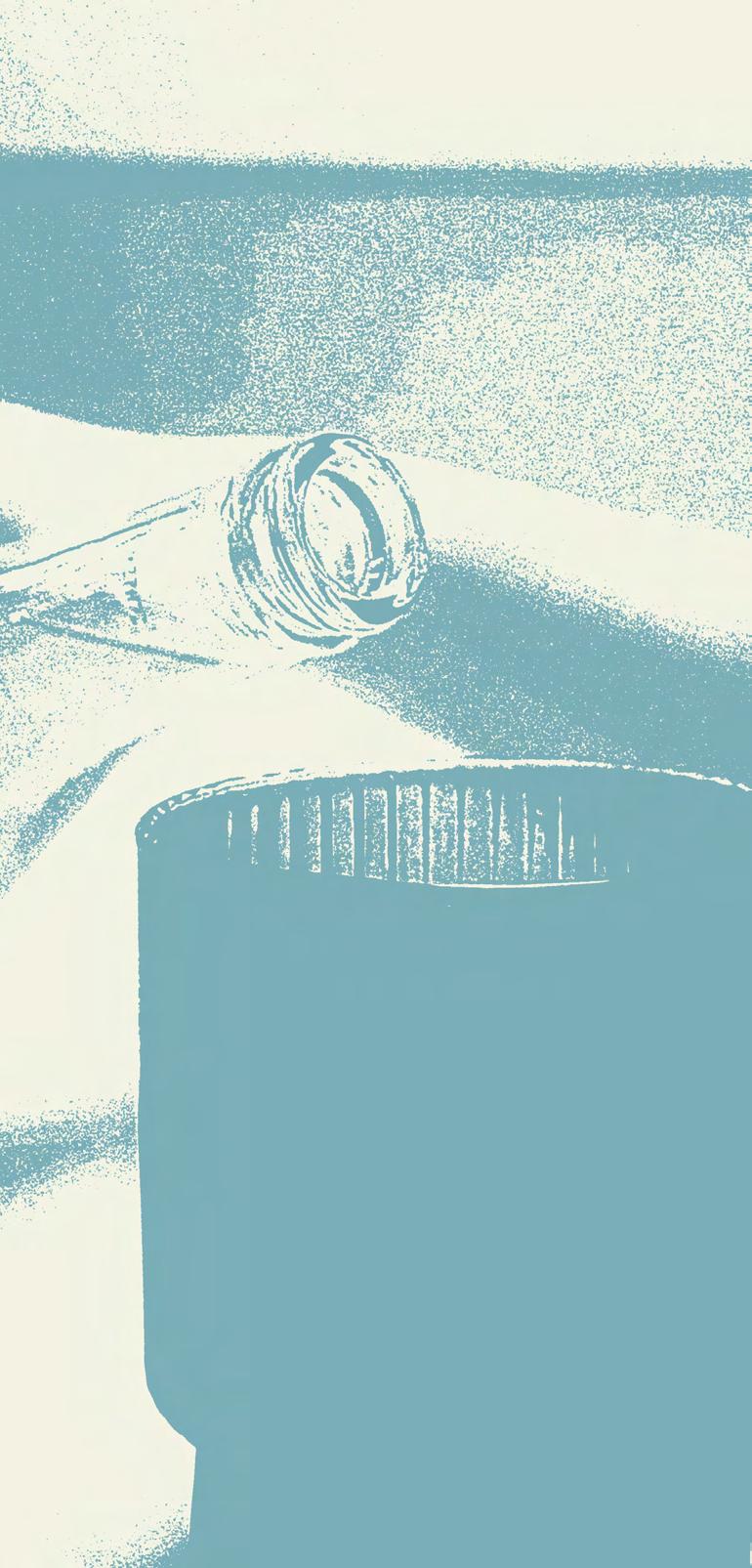

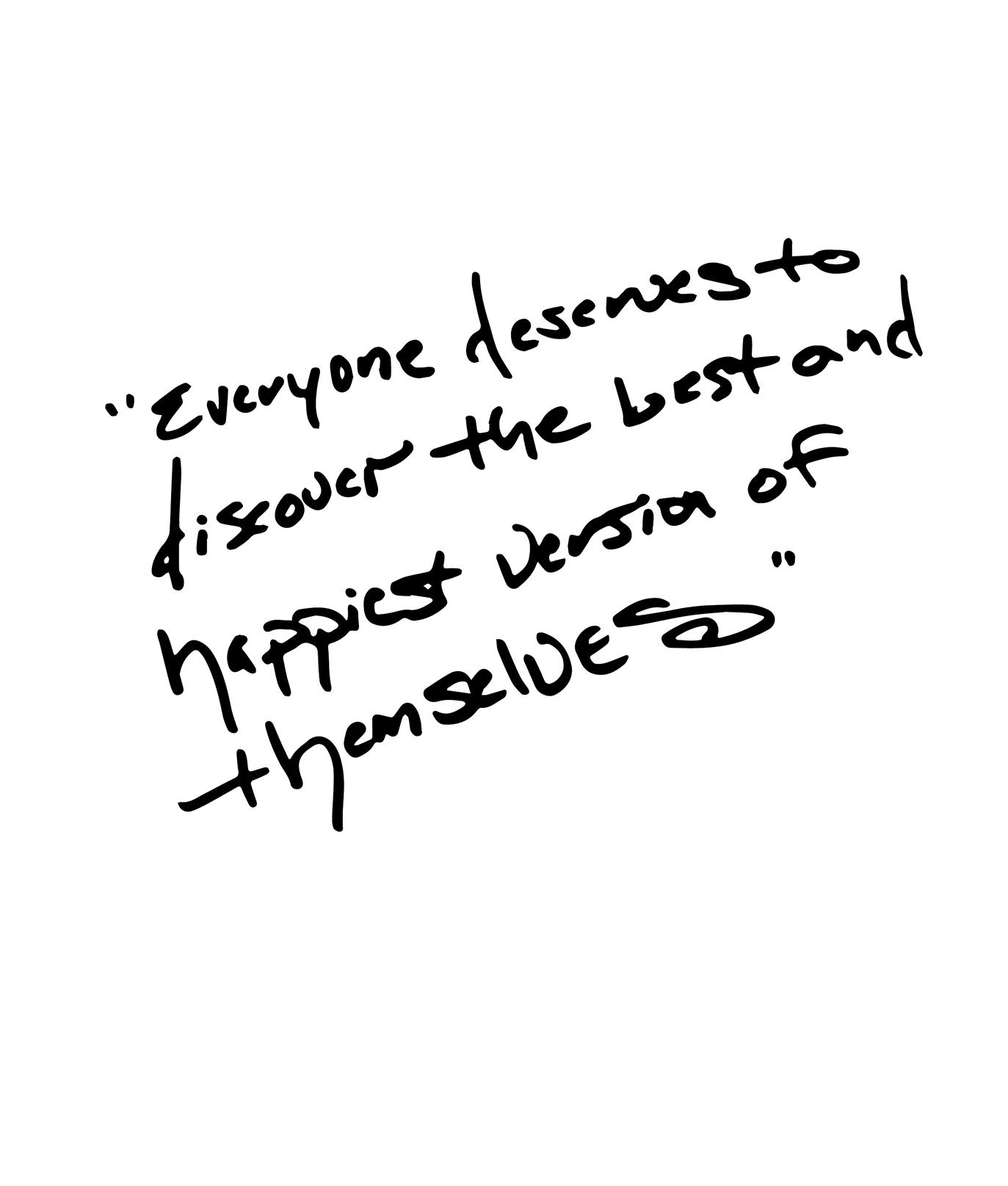
 DELANEY MOORE | ASSISTANT TRAVEL EDITOR
PHOTO | ANA LUISA SCHOLTES
DESIGN | CINDA BIRCH
DELANEY MOORE | ASSISTANT TRAVEL EDITOR
PHOTO | ANA LUISA SCHOLTES
DESIGN | CINDA BIRCH

You can learn a lot of things from the flowers…” and you can, you really can. As it is referenced in the “Alice in Wonderland” lullaby “The Golden Afternoon,” gardens bring us “a wealth of happiness and romance,” feed our need for escapism and heal our inner woes. The flowers we’re drawn to are a physical manifestation of our embodied aesthetics and personal style. They’re more than a decoration or gift — they are a representation of us. They make us feel like we’ve transcended reality. They remind us of the elegance and wonder of life. They give us solace. They give us peace. Flowers free us. Stepping into a garden is like stepping into Wonderland — it’s ethereal and abstract, lovely yet isolating, otherworldly yet simple, curious and pleasant. We are all Alice when we visit a new garden. If you’re looking for magnificent spaces and hidden places to be enchanted, look no further — we’ve got you covered. From markets to gardens, there is a world of color blooming, patiently awaiting your arrival. Here’s a guide for the dreamers, world travelers and lovers — a guide to the flowers. Let’s ascend together. It’s time to smell the roses around the world.
Sunday — a day associated with the “scaries” and “fatigue” of the upcoming week. It’s a bookend day that has built up a muddied reputation of apathy and is all about pining for the next weekend to arrive, but it can be so much more than that; it should be better than that. Sundays should be for the sublime — a day about awe. If you’re looking to elevate your simple Sunday routine and just so happen to find yourself in London, check out the Columbia Road Flower Market. This Sunday-only street market specializes in all your favorite floral treasures. Embrace the day of yearning, and turn it into something beautiful at one of London’s oldest and most popular flower markets. As mentioned in an article from CK Travels, Columbia Road Flower Market is a one-stop shop for all your botanical needs — plants, flowers, blossoms and more. With rows and rows of Victorian shops, this market embodies traditional London. Situated off Hackney Road in the London Borough of Tower
Hamlets, this once dingy corner is transformed on Sundays into an eye-catching haven of merriment and jolly. A retreat of charming florals, Columbia Road is one of the most Instagrammable locations for spring.
CK Travels explains that since there are around 50 different flower stalls all vying for your attention, this market is a much cheaper option than traditional garden centers or supermarkets. It’s a steal! The article describes the banter between stall-holders as something to soak in — it's cheeky, witty and makes the market feel more alive. You will see Cockney “geezers” bellowing various one-liners and other enticements to get you to shop at their stall. Let yourself feel alive on Sunday instead of dreary, and head to Columbia Road. Other flower markets to check out to get your fix of graceful whimsy and bustling energy include: New York Flower Market, Bloemenmarkt (Amsterdam, The Netherlands), Flemington Flower Market (Sydney, Australia) and Cuenca Flower Market (Cuenca, Ecuador).
Who doesn’t want to find their own personal secret garden? A place that is your very own — a hidden gem, if you will. Gardens and the idea of femininity have been intertwined for decades, solidified into a true association with the publication of the bestselling novel “The Secret Garden” by Frances Hodgson Burnett. “The Secret Garden” follows 10-year-old protagonist Mary Lennox who, after the death of her parents in India, is sent to live with her uncle in Yorkshire, England. Mary’s is a story of luxury and isolation; it's about learning to see life in a better light. It’s about self-discovery, growth and beauty — all of which she learns from the garden. It is a story of girlhood — the state of being a girl. But, it's truthfully all about growth. Girlhood is when you flourish, it’s when you bloom
A garden is like a personification of girlhood. It ebbs with time, changing with every season as it is transformed into something new and beautiful. Anyone, regardless of who they are, can relate to the idea of girlhood — the isolation, the learning and the beauty. If you're yearning for your youth, we have the perfect hidden garden that you just have to visit. Connect with your inner child at the Hill Garden and Pergola in Hampstead Heath, London. This is a place where you can just get lost. Experience expansive views, overgrown vines, raised pathways and dreamy flowers in this hidden oasis. Admission is free to visit these gardens, so it's the perfect retreat for someone on a budget. Live in the ethereal and frolic in one of London’s bestkept secrets.
Other gardens that are perfect for those looking to connect with their young soul include: Moss Garden at Saiho-ji Temple (Kyoto, Japan), Claude Monet’s Gardens (Giverny, France) and the Gardens of Ninfa (Central Italy).
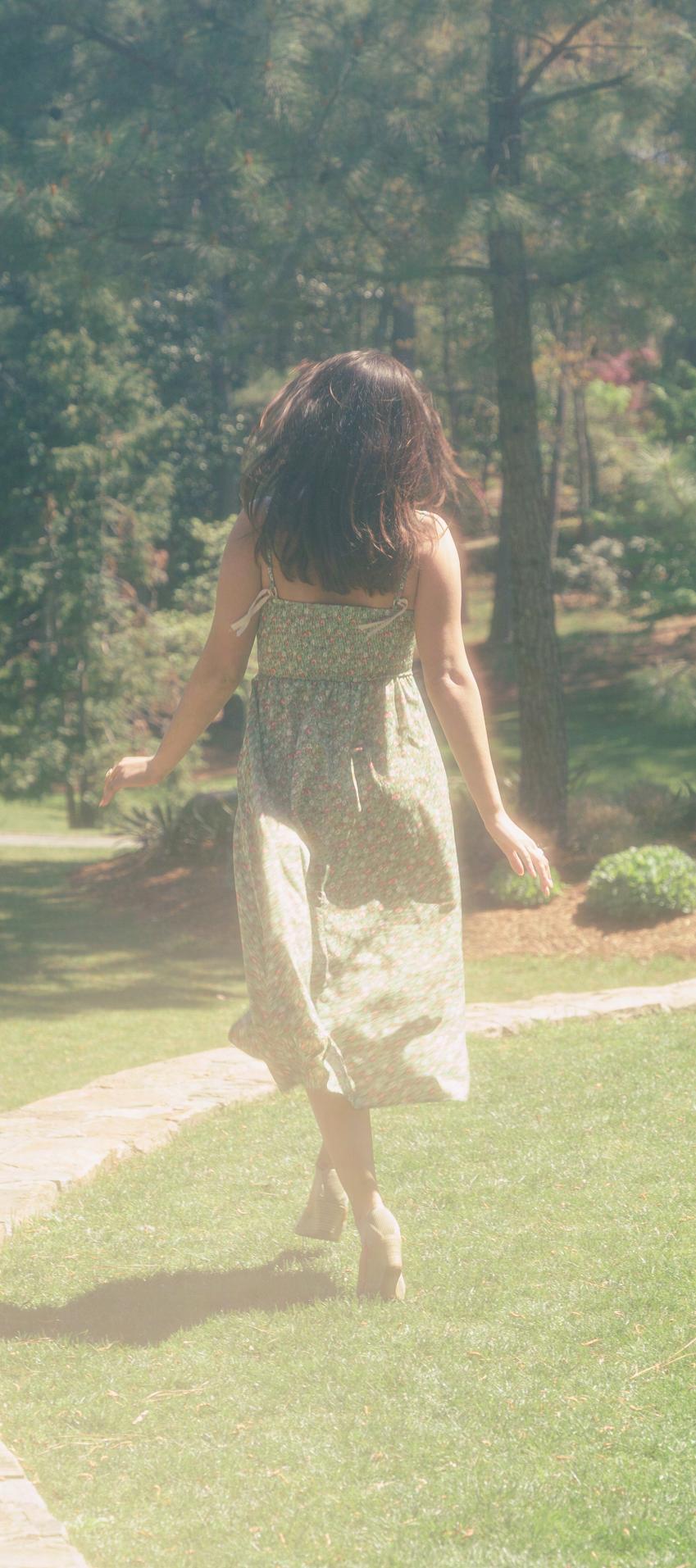
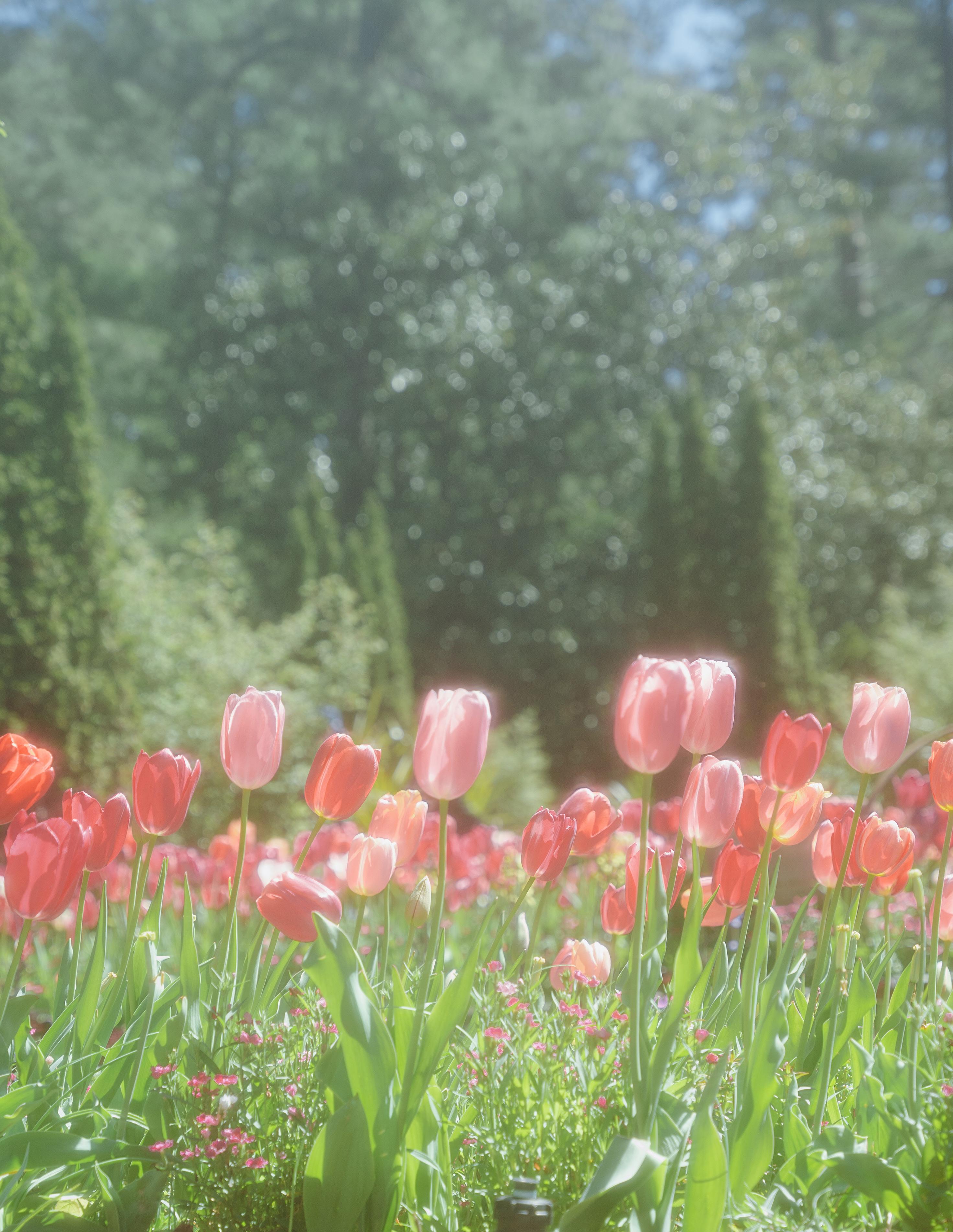
“YOU CAN LEARN A LOT OF THINGS FROM THE FLOWERS”
“YOU CAN LEARN A LOT OF THINGS FROM THE FLOWERS”

In the words of singer Natasha Bedingfield, “Take me away/ A secret place/ A sweet escape.” If you’re yearning to disappear into a fantasy land of your own and, like Natasha, are just looking for your own personal pocketful of sunshine, we recommend feeding your explorer syndrome at the world-famous Keukenhof Tulip Gardens. These botanical gardens are located in Lisse, Netherlands about 40 kilometers from Amsterdam and are an absolute explosion of color. Here, you can be truly immersed in the flowers like nowhere else, as Keukenhof also means “Garden of Europe.” According to Tripadvisor, Keukenhof is the independent, international showcase for the Dutch floricultural sector, with a special emphasis on flower bulbs. It's a festival of color, beauty, elegance and, of course, flowers. Embrace your inner divine feminine, and just let yourself be encapsulated in this gentle yet grand display. If you’re looking for other bright gardens to lose yourself in, check out the following recommendations: Newton Vineyard (Napa Valley, California), Duke Gardens (Durham, North Carolina),
As busy college students, it's important to take a breath and find the beauty in the chaos. Find joy. Find peace. Find the flowers. Find the sublime. To connect with ourselves is to embrace the lovely simplicity all around us. Gardens are a place to revitalize, refresh, restore and reset — a place to get blissfully lost. Let’s get lost together.
Feed your soul. Be enchanted. Live in the ethereal. Ascend into beauty. Reconnect with your inner femininity. Go to the gardens, they’re calling you….
